THESCIENTIFIC MARKSMAN

2023-2024


2023-2024
The next year Dallas will experience a total solar eclipse. When the Earth, Moon, and Sun’s dances will align to extinguish the day. Short of a scientific miracle, none of us will be alive to witness it. That is what made April 8, 2024, so special – the fact that we were able to gather as a school and witness a marvel of nature together.
This edition of The Scientific Marksman reflects on what happens when communities come together and become more than the sum of their parts. Whether it’s building robots, exploring the deep ocean, or fighting invasive species, current Marksmen and alumni constantly create and lead teams that actively improve our world.
It is with great honor that we present the twelfth edition of The Scientific Marksman 2317.
Co-Editors-in-Chief Alex Pan ‘24, Joseph Sun ‘25
2317. 2317. 2317. 2317. 2317. 2317.
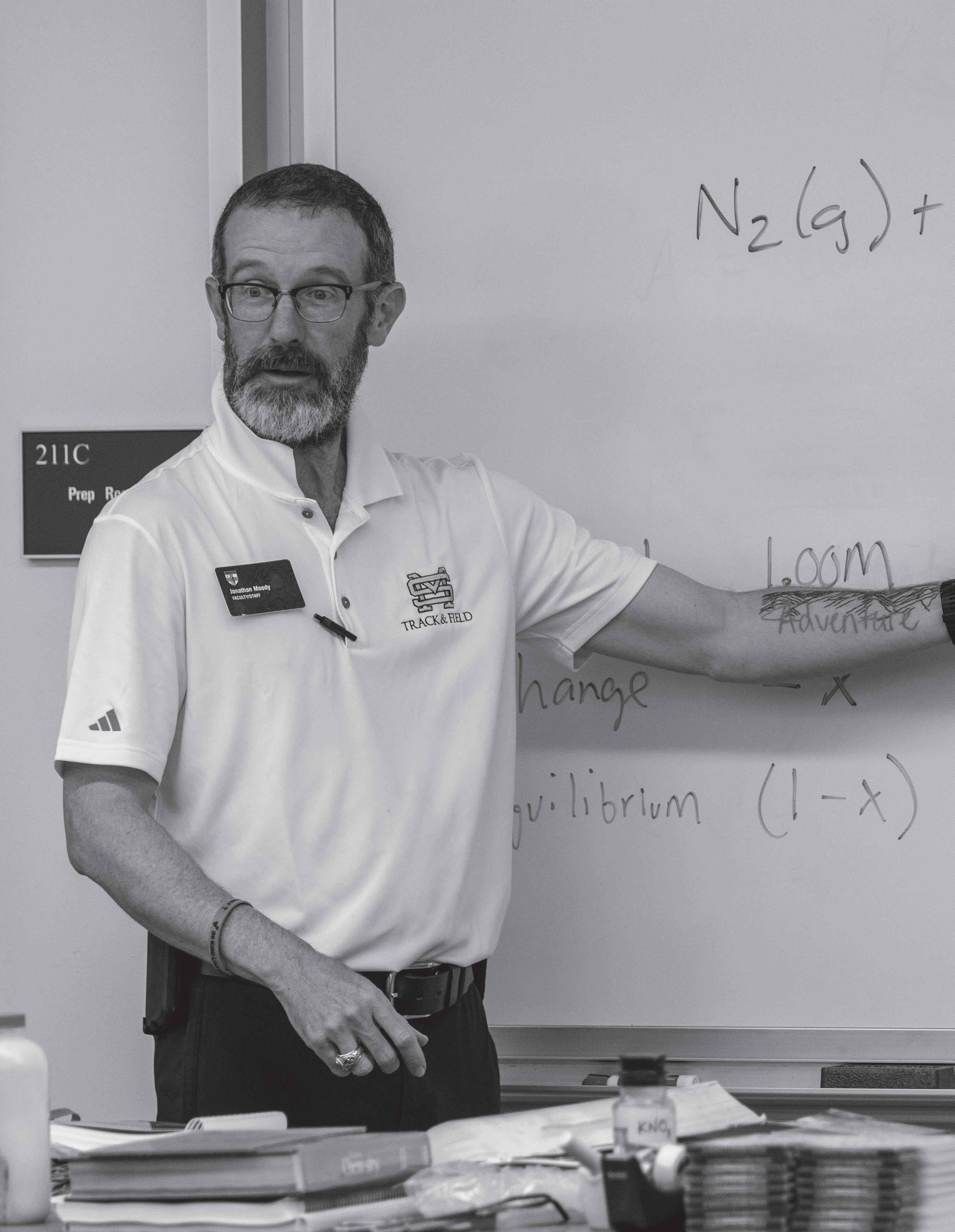

Though this is only his third year at St. Mark’s, Dr. Jonathan Moody has already left a distinct impact on hundreds of students both in the chemistry lab and on the track. Whether he’s showing new chemists how to light a Bunsen burner for the first time or coaching athletes on the track under the burning sun, he always maintains his careful equilibrium of humor and discipline. His ever-changing facial hair and signature catchphrase, “What the beans?”, never fail to bring an extra sparkle into the eyes of young Marksmen.
The St. Mark’s community cannot express enough our immense gratitude for Dr. Moody. We sincerely appreciate his commitment to mentoring the next generation of young men and thank him for standing as a role model for both students and teachers. In recognition of his unparalleled work, we dedicate this edition of The Scientific Marksman to him.
DOCUMENTING THE ABYSS
BUILDING THE FUTURE
NEW STEPS: ARTIFICIAL INTELLIGENCE
OLYMPIAD CONTESTANTS
DIVERSIFYING EXPERIENCES
BRICK BY BRICK
DIAMOND RING
DECODING DISORDERS
FINDING A CURE
GENOMIC GEMS
PERSPECTIVES OF AN MD/PHD
A NEW FRONTIER OF SURGERY
SURGICAL INNOVATIONS
PERSPECTIVE: JOSHUA CHOE ‘16
FIGHTING FISH WITH FASHION
ACROSS THE COSMOS
HAWAII’S FIRES
DANGERS IN THE DEEP
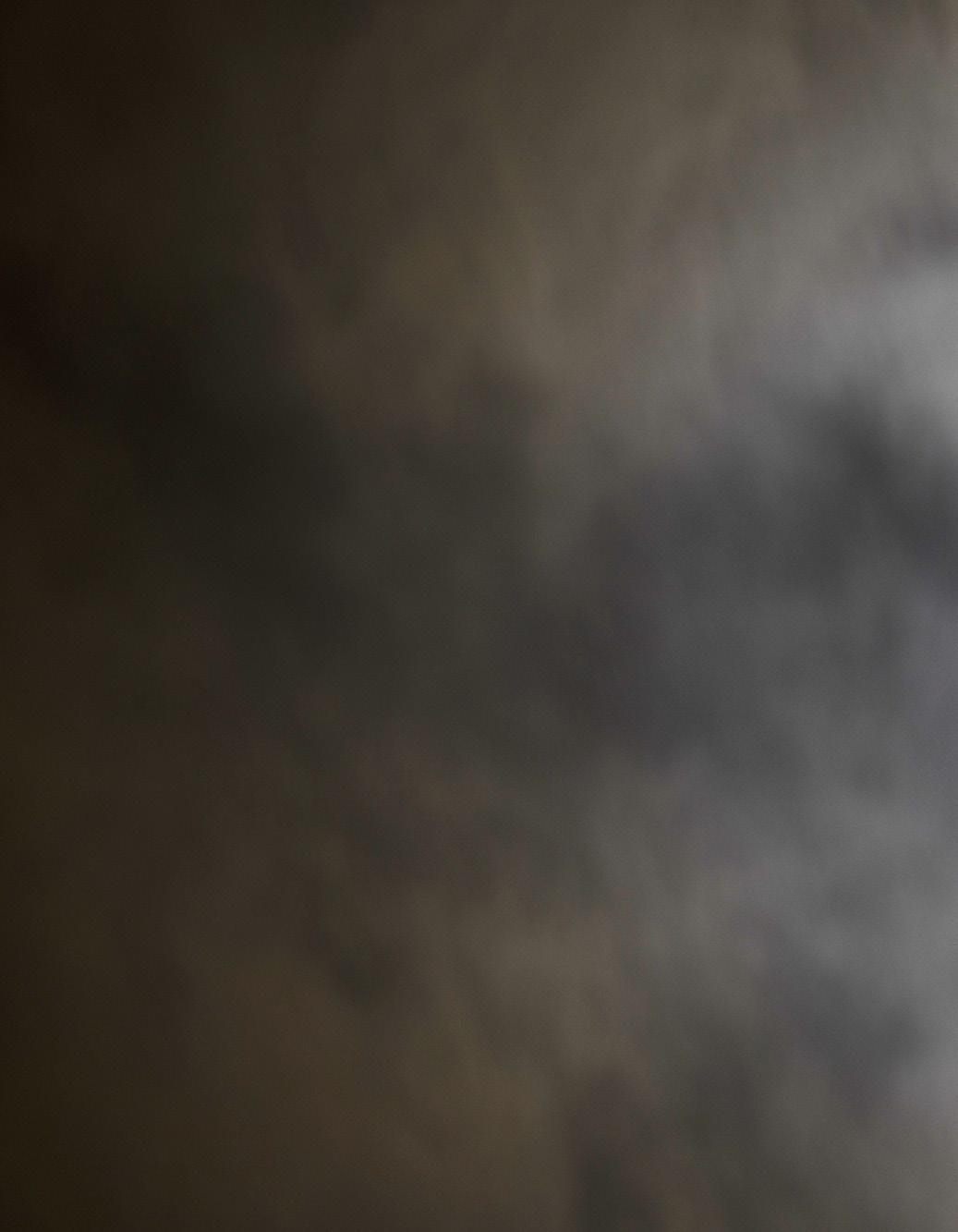
This event marks the beginning of the journey towards a total eclipse. First contact heralds the first step in a Marksman’s journey. This section encourages students to take their first steps into the STEM fields and discover what may blossom into lifelong passions. Whether it’s the middle school extracurricular robotics team or the new Upper School engineering classes, countless organizations on campus give students a place to explore the scientific interests that they share with others. All one has to do is take that first step.
Photo Preston Ghafar
DOCUMENTING THE ABYSS
BUILDING THE FUTURE
NEW STEPS: ARTIFICIAL INTELLIGENCE
OLYMPIAD CONTESTANTS
DIVERSIFYING EXPERIENCES
BRICK BY BRICK
Edwin Hubble’s discovery that Andromeda was not a nebula has expanded our view of the universe beyond previous perceptions. Dr. Michael Lane explains the significance of past astronomical milestones and remains optimistic about future discoveries, highlighting ongoing research into topics such as dark matter, cosmic explosions, and space colonization.
Acentury has passed since astronomer Edwin Hubble first realized in 1923 that Andromeda was not a nebula, but a whole galaxy. To comprehend why Hubble’s “discovery” was more of a realization, a deeper exploration is necessary. Before Hubble, the majority of astronomers believed that Andromeda was a part of the Milky Way. Previous attempts to determine the distance to Andromeda failed due to a lack of reliable techniques. However, astronomer Henrietta Leavitt found that the “period,”
the amount of time a star takes to brighten and dim, is proportional to its intrinsic brightness; therefore, if an astronomer measures the period of a star, then they would know its absolute brightness, allowing them to calculate the distance. This is exactly what Hubble did.
After discovering a particular star in Andromeda and completing his calculations, Hubble found that the distance to this star was so large that it could not reasonably be in the Milky Way. Later, Leavitt’s technique was repeatedly used to determine that many other perceived nebulae were actually galaxies.
With the growing prospects of manned space missions in the near future, Leonard “Doc” Nelson Alumni Master Teaching Chair and astronomy scholar of twenty years Dr. Michael Lane provided insight on the significance of the past discovery of Andromeda and future space colonization.
“The importance of [Hubble’s realization] could be compared to the discovery of the Americas by Eriksson or Columbus, or the proposal of the heliocentric model by Copernicus. Like those theories, it completely changed our view of our place in the world and cosmos,” Dr. Lane said. “Whereas once we thought our universe consisted only of the
stars we see in the night sky, the discovery of Andromeda made our universe enormously greater than it had just a year before.”
Furthermore, Dr. Lane states, “Another important result of this is that Hubble would use his distance measurements of these galaxies, along with already-published measurements of their velocities, to make his most famous contribution, and perhaps the most important discovery in astronomy: that the universe is expanding.”
As science has progressed, many more discoveries and observations have been made that has shifted our understand-
ing of the universe. Besides Hubble, there are a number of other significant astronomers who were monumental in the development of contemporary knowledge.
Firstly, Dr. Lane points to the cosmic microwave background (CMB), the light from the earliest observable time – 380,000 years after the Big Bang. First introduced by scientists George Gamow, Ralph Alpher, and Hermann von Helmholtz, the CMB was observed much later by Robert Wilson and Arno Penzias and cemented by Jim Peebles and Robert Dicke.
“The first detailed image of the cosmic microwave background (an experiment named COBE), showed the future locations of galaxy superclusters and expansive voids. Again, it provided evidence for the Big Bang,” Dr. Lane said.
Secondly, Dr. Lane delved into the observation and proposal made by Fritz Zwicky regarding dark matter. Zwicky’s groundbreaking contribution involved the study of an invisible substance that did not emit, absorb, or reflect light, hence the characterization as “dark.” This proposal sparked a paradigm shift in astrophysics, challenging conventional notions of the universe’s composition. Zwicky’s work laid the foundation for further investigation into the nature of dark matter, reframing fundamental understandings of cosmology.
Thirdly, Dr. Lane explored Eddington’s proposed measurements, revealing the bending of light from a distant star as it traverses near the Sun. This concept significantly bolstered Einstein’s general theory of relativity, catapulting him into popular recognition. Moreover, embracing general relativity expanded our understanding of the workings of the cosmos.
As an active member of the astronomy and cosmology community, Dr. Lane remains optimistic for the future of research and development in those fields.
“Not only are there a lot of questions to be answered, but there are questions that have
tentative answers that need to be confirmed or improved. Research is at the cutting edge, and there is room for imaginative speculation in addition to equation-crunching investigations,” Dr. Lane said.
For the most part, the biggest unsolved questions have to do with cosmology, high-energy phenomena, theoretical physics, or philosophical concepts such as the nature of time, existence, and the possibility of a multiverse.
DR. MICHAEL LANE Science InstructorConsidering the vast nature of space, even recent discoveries have the potential to cause scientists to reconsider previous findings. For example, astronomers at the Zwicky Transient Facility in California and the Asteroid Terrestrial-impact Last Alert System (ATLAS) in Hawaii detected the largest cosmic explosion ever recorded by humans, named AT2021lwx, in May 2023. The brightest area of AT2021lwx was determined to be two trillion times more luminous than the sun. Astronomers say events similar to AT2021lwx, dubbed tidal disruption events, could be crucial to understand the processes galaxies undergo over time. Dr. Lane proposes a multitude of phenomena that astronomers have yet to examine.
“We were surprised by the types of exoplanets that we’ve discovered, which brought into question the nice and tidy model of how our own solar system was formed. We also have a rather messy description of supernovas. There are things we aren’t sure about regarding the Sun, such as what causes the solar cycle and the Sun’s connection to weather on Earth,” Dr. Lane said. “For the most part, the biggest unsolved questions have to do with cosmology (birth, evolution, shape, structure, and future of the universe), high-energy phenomena (black holes), theoretical physics (nature of dark matter and dark energy), or somewhat philosophical concepts such as the nature of time, existence, and the possibility of a multiverse.”
Looking beyond, Dr. Lane considers ongoing speculation around the potential for mankind to expand to the stars, starting with Mars and the Moon. Space colonization remains a controversial topic both among the astronomy community and the general public, meaning there has not been a robust effort towards expansion.
“I’m very excited about the renewed interest in space exploration,” Dr. Lane said. “In the next few years, we’ll be back on the Moon. It would be a momentous accomplishment that can have a uniting and inspiring effect on all the citizens of Earth. But other than that, it doesn’t make much sense to visit other planets. It would be much too costly and dangerous. Plus, technology has improved so much that robotic missions can do everything that and more than a human could. We really need to work on higher speed travel. The private sector (e.g. SpaceX) will likely lead the way.”
Looking past the Moon is the idea of landing astronauts on Mars. Even though establishing a base would be precarious, Dr. Lane suggests doing so would not only be a good idea but enjoyable as well, providing a new perspective on what some may perceive as the dangers of space travel.
“I readily believe that we can and should develop a base on Mars. There are many political and environmental issues to be worked out, but they can be. It won’t be easy, but nothing is preventing us. We have the technology already,” Dr. Lane said. “One thing that holds us back is the fear of not getting the astronauts back safely. One sacrifice we have to make is to allow an astronaut to live and die there. Personally, I think I would volunteer to be an astronaut who lands on Mars even if I were told that I’d never be able to come back. I think of how amazing that experience would be, especially if I were the first one to land there. I truly would be the first Martian.”

First Tech Challenge, or FTC, is an annual robotics competition for 7th to 12th graders. With over fortyfive thousand students participating, it becomes a very competitive yet exciting engineering challenge.
This year marks the beginning of a new age of robotics at St. Mark’s School of Texas. After multiple years of successful participation in robotics competitions like BEST (Boosting Engineering Science and Technology), seniors Arav Rawat and Vivek Patel have started a new robotics team geared towards competing in the annual First Tech Challenge (FTC) competition.
The FTC competition runs from mid-September all the way to April. After that, the world competition is in April, and off-season competition is in June.
Although Arav started robotics early in middle school, he only switched to FTC in eighth grade.
“I enjoyed it more because it gives you a lot more things to do, it’s a lot more robust, and it involves a lot more metal and a lot more components,” Rawat said.
“FTC robots are 90% metal as opposed to BEST robots, which are 90% wood,” Rawat said. “I’m the software person, and BEST is just moving servos [motors] between 2 positions, while FTC is automating a bunch of things, utilizing computer vision and advanced localization, and moving complex arrays of servos; it’s a whole lot more things in general, and a lot more things to do on the software side. With FTC, there’s no ceiling to it. We can just keep on pushing and keep on doing new things.”
The other component of this new team is the opportunity to teach younger roboticists. As a captain and leader on the team, Arav has embraced this responsibility whole-heartedly.
StoryThe level-up in difficulty, complexity, and required ingenuity that comes with this new team’s challenge is noticeable right from the start. Not only is the tournament more competitive and the work required more arduous, but the creative process is wholly distinct as well.
“On the FTC team, there are only three people with experience, so it’s about how to teach [the younger students] and to get them some experience… We want to get everybody involved and get everybody motivated, especially new people who’ve never been to a competition before,” Rawat said.
At a school already well-equipped with a state-of-the-art Makerspace and a plethora of STEM-focused faculty, the limits to this new team’s success seem nonexistent. A large part
of the team is also already very successful in this field, and they are hoping to build on the achievements they’ve made in past years.
“The goal this year is to advance past Texas States,” Rawat said. “All of the experienced people on the team made worlds last year, so the goal is to repeat that. We came from the top three teams in North Texas, so hopefully with our experience, we should be able to repeat that.”
However, to turn these lofty aspirations into a reality, a disciplined schedule and work distribution are required. One of the distinguishing features of this new team is its ability to stay on schedule while also adapting to everyday obstacles.
“Every day after school we have people upstairs working,” Rawat said. “We start off the season outlining goals, and from there we make constraints and decide what we want the robot to really be. To do this, we split up the robot into different subsystems, [with] each person or group of people working on one part of the robot.”
This isn’t the only exciting revelation in robotics at St. Mark’s this year. Local robotics team “Technicbots” made it to the international FTC robotics competition in Geneva, Switzerland, thanks to the hard work and dedication of multiple Marksmen. Sophomore Andrew Ye shared a little bit about his beginnings on this team and the nature of the organization.
“This year, I joined Technicbots. We engage in outreach efforts and spend a lot of time on robots outside of school, and we got to worlds this past summer, which is the international championship,” Ye said. “Our team has three sectors: hardware, software, and outreach sector. For me, I’m a hardware person; I spend a lot of time on the robot, but recently I’ve been
trying to engage more in outreach. I’ve been building social skills and soft skills.”
On a team where every member is so chock full of talent, it’s hard to configure a hierarchy based purely on merit. Andrew has found the team has engineered some clever workarounds for this issue:
“Pretty much all of us are leaders. We do have a team captain as well. That’s a role for people who’ve been on the team for a while and can effectively guide other people on the team, and I foresee myself assuming that position pretty soon if I can lead people effectively in both hardware and outreach. But every one of us has responsibilities and the opportunity to help people.”
I enjoyed it more because it gives you a lot more things to do, it’s a lot more robust, and it involves a lot more metal and a lot more components.
ARAV RAWAT Class of ‘24
Despite the rigorously competitive environment throughout the year, they manage to cultivate a cooperative team spirit.
“We get along very well. We’re all around the same age, which helps our cohesiveness. Everyone is very comfortable with one another… The atmosphere is very accepting.”
Not only do the team members get along well, but this cohesion further fuels the unique and effective design process that they implement to engineer the best possible robot every year.
“We design a first iteration, like a proof of concept,” Ye said. “As we move on through different competitions and tons of different iterations, we optimize different mechanisms to score more effectively, and all of our teammates
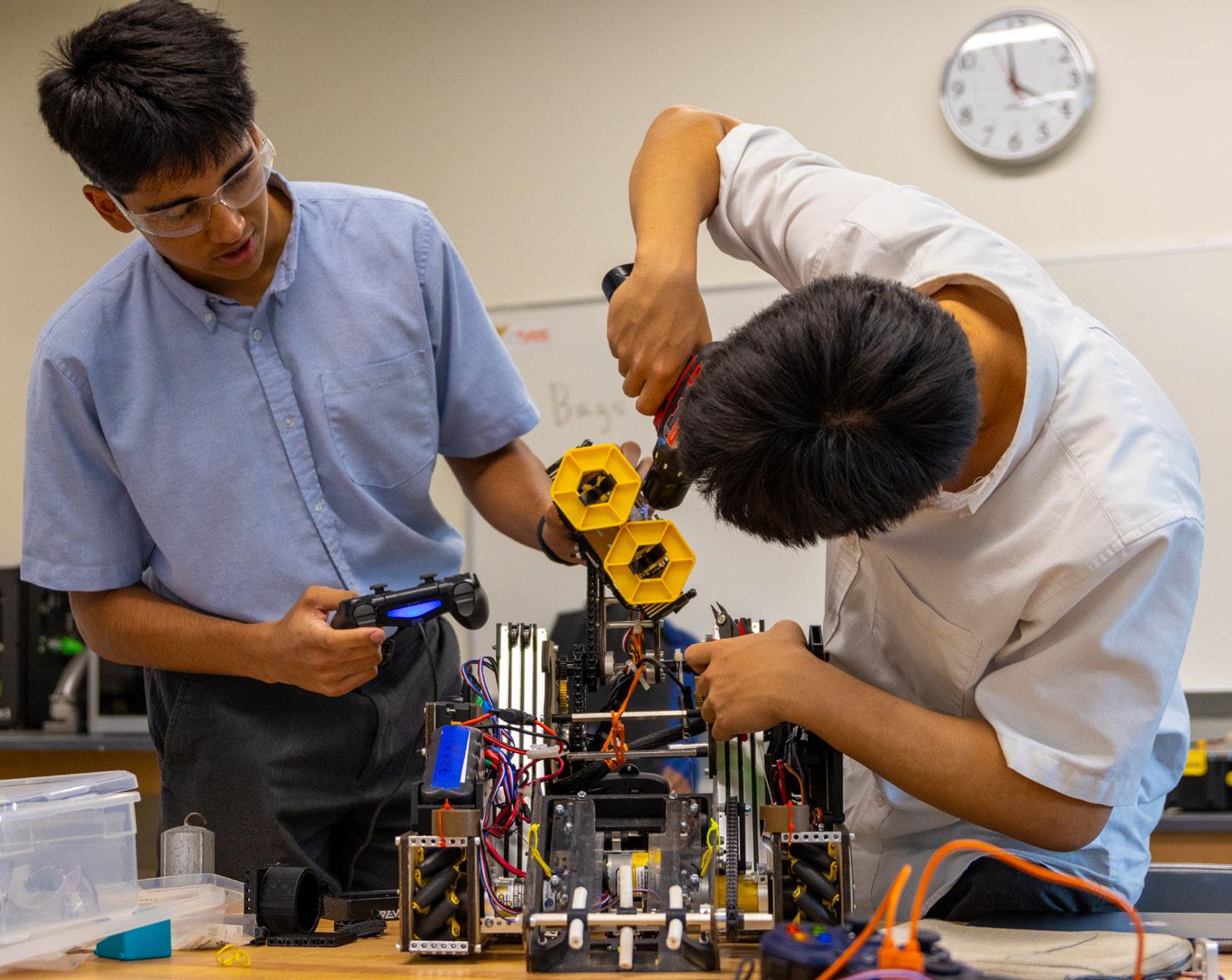
put ideas into the robot, so we end with the best possible final product.”
After advancing through several local and state competitions, the team had the opportunity to compete internationally. Around 450 teams are selected to receive this honor worldwide, and the championship in which they compete is considered to be one of the most prestigious in the world.
“The way that the US gets their national team is by getting an Inspire Award. So back in 2022, our team was selected for the award, and we were selected as the US representative. The competition was in Geneva, and FGC is a different competition, totally separate from FTC. It’s more of a ‘coopertition,’ where you cooperate and compete at the same time. It’s pretty counterintuitive.”
This dichotomy between competition and cooperation puzzled some of the Technicbots roboticists at first. But once they had arrived and started to talk to some of their competitors, they quickly warmed up to the idea.
“The atmosphere was highly supportive. The venue was huge, and the booths were right next to each other. There were rows upon rows of teams, and everyone wanted to help each other out. I remember we were helping a bunch of different countries with the linear slide, because we were very successful with it. Some other teams struggled with it because their parts were delayed, so the atmosphere was very competitive but even more supportive.”
By the end of the competition, the Technicbots team finished in the top 50 participating nations, bringing home trophies and medals along with a newfound ambition to succeed at an even higher level next year.

robot’s claws before the world championship. With a gamepad and screwdriver, they identify a loose screw (Left). Sophomore Andrew Ye sets up his team’s robot on the competition mat for a couple practice runs (Top).
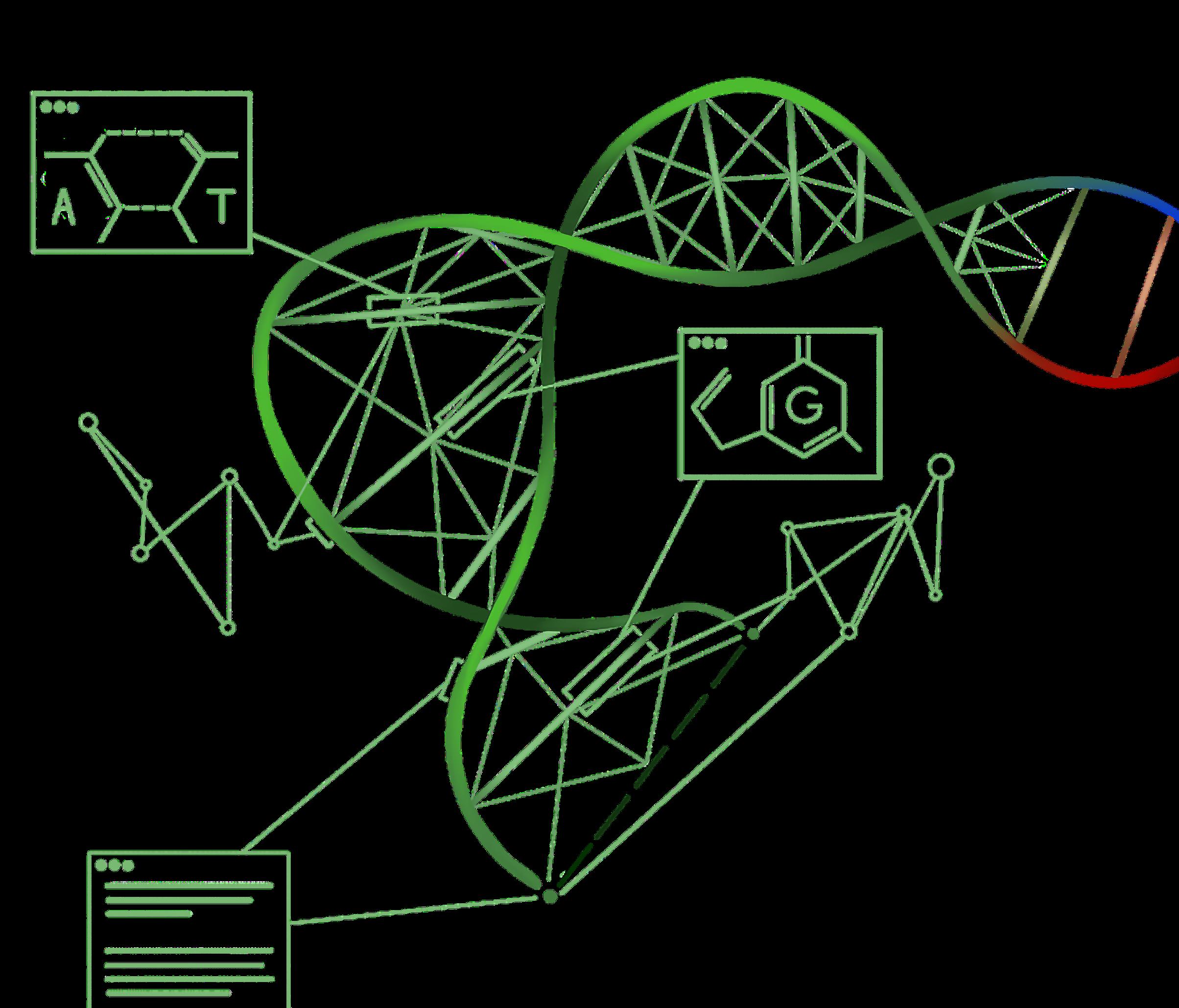
Artificial intelligence (AI) has taken the world by storm. Some AI programs are able to generate hyper-realistic photos, while others are capable of analyzing massive amounts of data. As AI has become more versatile, new use cases have been introduced into St. Mark’s classes.
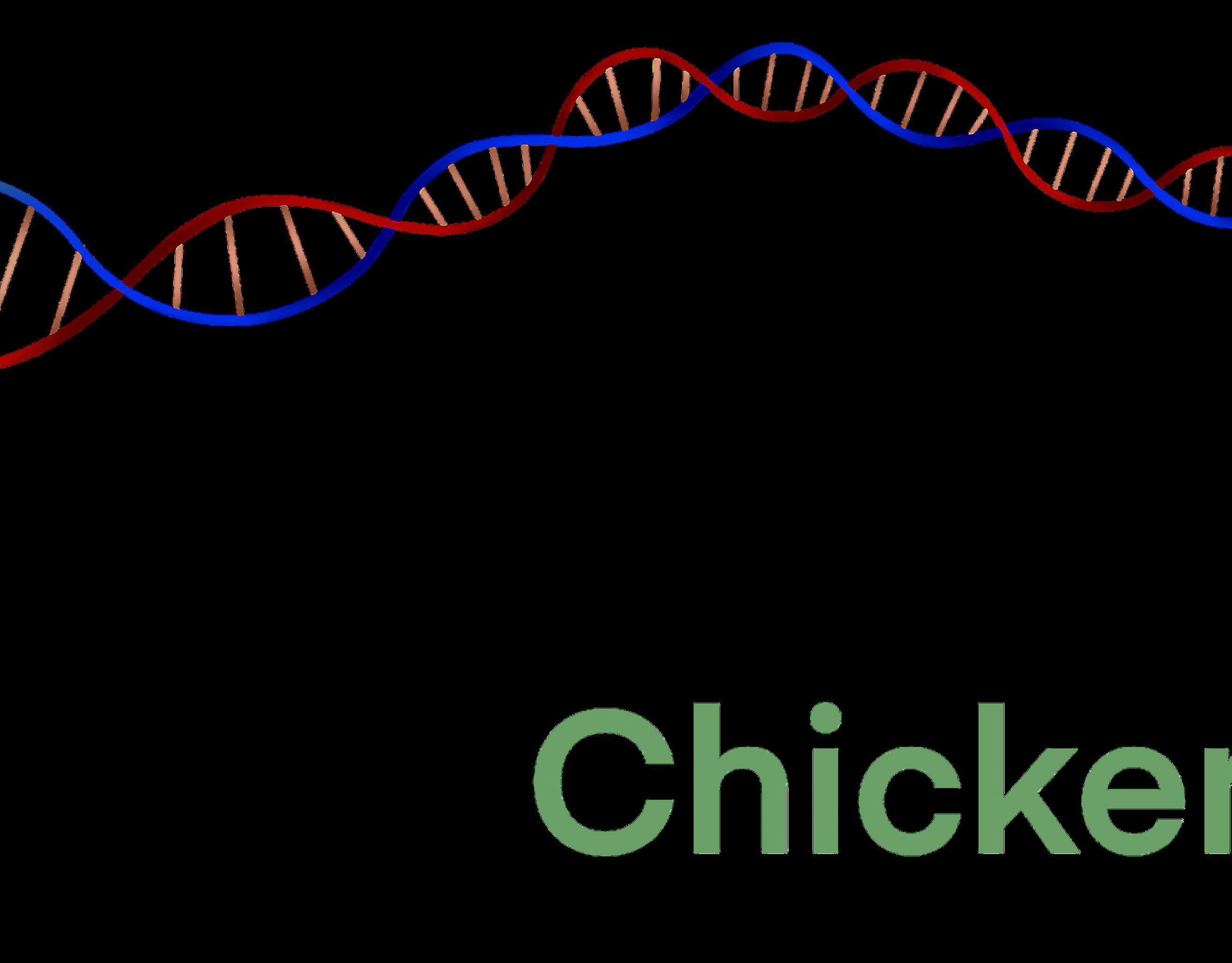
Artificial intelligence (AI) is a broad field of computer science focused on creating systems of machines capable of performing tasks that typically require a human being.
From machine learning to natural language processing, the applications of AI in modern society seem endless. And the applications have been endless, stretching all the way from spelling suggestions to creating answers to questions from scratch.
Over the past couple of years, AI has been integrated into the St. Mark’s community in various ways, some of which seamlessly streamline processes so well that it is hard to tell if it’s AI.
AP Biology and DNA Science instructor Mark Adame teaches students to utilize an National Institutes of Health (NIH) program called Basic Local Alignment Search Tool, or BLAST.
BLAST is used to compare biological sequences of information, such as DNA, RNA, or amino acid sequences. BLAST’s multiple sequence alignment capabilities would not be possible without hidden Markov Models and deep learning, both of which are statistical and logistical tools encompassed by the broad umbrella of AI. These advanced mechanisms allow for complex analysis and pattern recognition of multiple biological sequences, ensuring the best results for biology students and researchers alike.
English and history classes require students to write hundreds of essays and papers, all of which go through TurnItIn, a plagiarism-detection software that uses artificial intelligence. TurnItIn uses document comparison across a vast database of paper and websites, text-matching algorithms, and natural language processing to make sure students’ work is their own.
With AI being implemented more and more and its influence on students becoming greater, St. Mark’s repertoire of available classes has increased once again to better prepare students for the future. This year, Computer Science Department Chair Kurt Tholking introduced a new semester-long elective course that covers technical applications of AI as well as ethical issues with its usage.
“We’re going to go over what AI is, different types of AI, ethics, and some models and programs themselves,” Tholking said. “It’s only open to grades 11 and 12, as I was hoping to get guys who have taken computer science courses before.”
[AI assistants] are useful tools, and that’s the starting point. Students are using them to work, and obviously, some of that usage goes against Lion Tracks [St Mark’s Student Rules and Guidelines], but that’s why we need to have this discussion.
KURT THOLKING Computer Science InstructorWith the prominence of AI skyrocketing in both media and technological applications, particularly with the language model-based chatbot ChatGPT, Tholking is well aware of the cutting-edge nuance this brings to the course.
“Even before the course was proposed, AI was really in the news and started to show itself here at St. Mark’s with students using it,” Tholking said. “I think we decided it was a good time to bring in this kind of course, as we’re trying to build the computer science department.”
The elective’s curriculum will also be flexible in order for students to pursue individual projects or research. The class is open to work-
ing with students already engaged in personal AI projects as well as Computer Science and Engineering clubs already well-established at the school.
“We’re going to work closely with [other students] and see what kind of projects they’re working on, and we can talk about how they might relate to the class,” says Tholking.
The curriculum will teach students a general overview of AI as well as to consider the ethical implications of AI usage. With the usage of AI in academic settings becoming a very controversial issue within the education industry, the importance of the class is highlighted in its ability to teach students on what kinds of usage are appropriate and how AI tools can be used to benefit their work and education in proper ways.
“They’re useful tools, and that’s the starting point. Students are using them to work, and obviously, some of that usage goes against Lion Tracks, but that’s why we need to have this discussion,” says Tholking.
AI is a very powerful tool that can help with making life easier, and as more and more developments arise, it will only become more powerful and versatile. As of now, AI is already all around us, from the auto-correct suggestions in our word processors to the transcription software that allowed this story to be written, and it will only become more and more integral to everyday life. With a proper understanding of AI and the ethics behind it, students will be more prepared to succeed and thrive in an increasingly AI-dependent world, no matter what new AI technologies or developments the future may bring.
Story Benjamin Standefer and Ronit KongaraIllustration Carson Bosita
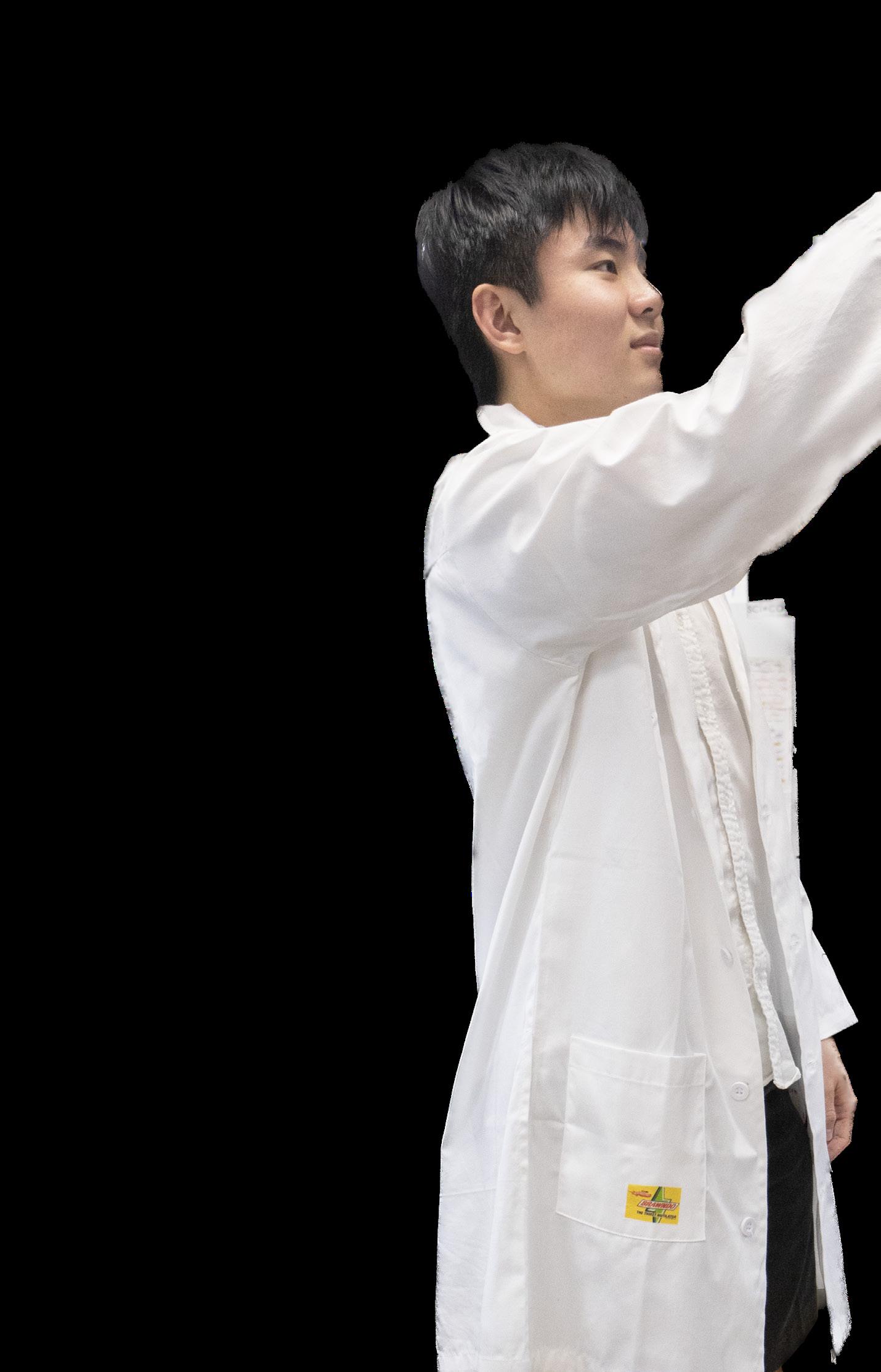

With interest in STEM growing steadily, participation in science competitions is at an all-time high. Four such competitors, Daniel Deng ‘25, Surya Dinesh ‘25, Tony Lu ‘27, and Christian Neisler ‘24, sat down with us and discussed the factors that contributed to their success in the biology, physics, math, and computing Olympiads, respectively. They represent a growing fraction of Marksmen challenging themselves with the rigorous material characteristic of national-level Olympiad contests.
When did you discover your passion for STEM?
Daniel Deng: Ninth grade biology with Mr. Adame was what sparked my passion. He’s just a great teacher. The class was fun, and it included many hands-on labs like growing Fast Plants and dissecting animals. From then I knew I liked biology – particularly anatomy and physiology.
Surya Dinesh: I got into physics my eighth grade year because of my dad. He was a big inspiration for me; he was really good at math and physics when he was my age in India, so he encouraged me to check out physics and see if I liked it.
Tony Lu: I was always known for being pretty good at math, and I hung onto that. I found people around me that also enjoyed doing it, and then that process really just fed itself.
Christian Neisler: My passion for STEM pretty much started with math. I did Khan Academy in middle school, and in 9th grade I joined the math team. Then computer science (CS) just came on the side, because other people who like math did that too.
What other interests do you have that contributed to your competition success?
DD: Since I do music, I’ve gotten really interested in how the brain, ear, nose, and throat regions are involved in sound production and interpretation, and that really helped fuel my interest in anatomy and physiology and biology.
SD: While I do have other passions and things I do for fun, math and physics are fairly isolated in the way you mention – I don’t think any other major passion I have really contributes to those.
TL: I’m kind of like a work-by-yourself person. I’ve played piano and done Quiz Bowl the past few years. Those help with giving me some-
thing to pass the time with and giving me that self-motivation. I’m about doing something on my own because I like doing it.
CN: Math definitely contributed the most. I tried other Olympiads, just for fun, but never really did too well.
What strategies did you employ in preparing for Olympiads?
DD: Reading Campbell’s Biology is a must. I also watch online tutorials, go to biology camps over the summer, and watch a lot of Cararra (a STEM YouTuber).
SD: There are lists of canonical physics resources online. But the thing I found really helpful is trying to be consistent with it, spending some time every day working at it. I tried to spend some time every day working at math and some time at physics.
TL: I did a bit of goal-setting, but it wasn’t overwhelmingly rigid. You have to be adaptive, and you can’t give yourself a hard time when things take longer than you thought they would. More specifically, on test day, it’s about being able to calm down and just enjoy that contest. It was a balance between evaluating myself and keeping myself motivated.
CN: I worked through past problems and used a website called CodeForces – they have as many problems as you need. But the thing is, nowadays, the USACO problem-posers pose math contest-type problems. They’re very combinatorics-based, and CodeForce has a lot of good practice for those.
What kind of community have you found on campus to support your interests?
DD: Biology Club has been a really great community. Mr. Adame and Dr. Lipin have also done great jobs fostering my interest. They were
both my group leaders on the Pecos Wilderness Trip, so we had lots of opportunities to chat about biology.
SD: St. Mark’s has been very supportive. I’ve gotten a lot of support from faculty: Mr. Irons and Mr. Houpt have been really supportive in the Physics Club.
TL: Math Team is still definitely very helpful, even if I am at a special level myself. It’s welltailored to St. Mark’s students in that it’s not too much of a commitment, but it’s also an active way to learn math.
CN: I joined the Computer Science Consortium in tenth grade. In the class of 2023, there were two students – Neil Song and Anthony Wang –who were both USACO gold, so I learned from them.
What advice would you give aspiring Olympiad competitors?
DD: Don’t do an Olympiad solely for your resume. Do it because you genuinely want to. You won’t get far doing something you don’t enjoy, so it’s important you have a real passion for the subject.
SD: The important thing is to find what you enjoy. It could be anything at all. But St. Mark’s has the resources to support your passion, so the competitive aspect is really not as important as just enjoying it.
TL: Start doing things. It’s all about just doing lots of problems and understanding how to solve those problems. You eventually find the process feels normal and feeds into itself.
CN: Definitely do the Bronze and Silver sections on the USACO website. They show you solutions for all the hard problems. Really, at the end of the day, it’s just about solving a bunch of problems.

Each student entering Upper School is required to take 9th-grade biology. However, teaching a field as complex as biology using lectures, slides, and books can be cumbersome for both students and teachers. To help students effectively learn and understand the material, biology instructors Mark Adame, Ryan Brewer, and Dan Lipin make their classes as hands-on as possible to enhance the learning experience for students.
In January of 2019, the doors of the Winn Science Center were opened for the first time to students.
The new 50,000 square-foot building was planned as the next step in the school’s advancement of learning in the STEM fields, and new classrooms and state-of-the-art laboratories were crucial to the fulfillment of this step. Additionally, with the removal of the former C-Wing of the McDermott-Green Science Building, students and teachers moved readily into the new building.
Now, five years later, students are reaping the benefits of the new facilities. In particular, many different classes have expanded their practical capabilities, from viewings in the planetarium to work in the greenhouse. But most importantly, the laboratory experience that each STEM class offers has been greatly improved. In no other science is this more evident than in biology, taught by Cecil H. and Ida Green Master Teaching Chair Mark Adame along with Dan Lipin and Ryan Brewer.
Most students take biology their ninth grade year. A normal biology class covers most basic biological concepts, ranging from topics like molecular biology to human anatomy, and teaching is supplemented with numerous laboratory experiments and projects. The experiments used each year vary, but for the last few years teachers like biology instructor Ryan Brewer have favored starting the year with a plant growing lab.
“That first lab introduces the basic scientific method,” Brewer said. “There’s lots of independent and dependent variables, like the pH of the soil or the strength of the light, and the students get to play around with those different kinds of conditions.”
Microscopes are also introduced early in
the year, and students get to experiment with different kinds of lenses and the fine tuning of the instrument. Once students are also familiar with lab safety, their laboratory experiments are planned around their current lessons: for example, when Brewer teaches students about cell transport and osmosis, the spontaneous diffusion of water molecules over a membrane, Brewer does a demonstration with gummy bears in different solutions, like tap water, salt water, and sugar water.
There’s
so many potential
things to do. And sometimes, you just have to accept that there’s only a finite amount of time.
DAN LIPIN Biology Instructor
For many students, the visual aspect of the lab provides to them a much richer understanding of the actual topic itself. For freshman Guru Aroul, building models of lung alveoli helped him to visualize the relationship between size and efficiency.
“We cut out some cube nets of differing sizes, and we put them together with tape,” Aroul said. “It turned out that the bigger the size of the ‘cell,’ the ratio of the surface area to the volume decreased. Before that, I thought cells were small because they’d break if they were too big, but [the lab] gave me another perspective on that.”
One of the highlights of a ninth grade biology lab experience is the sheep heart dissection. Students are given the opportunity to use scalpels to open up a sheep heart and view the different chambers, arteries, and veins that they studied previously.
But this year, Brewer worked with biology instructor Dan Lipin to introduce a new experiment.
“Last year, I felt that we didn’t have
enough really hands-on activities,” Lipin said. “Though not every kid enjoys that kind of thing, most kids do. So this year we had students dissect bullfrogs. The benefit of the frog dissection was that we could tie that all into the respiratory and digestive systems that we were studying.”
Changes in the list of biology experiments from year to year are common. Every year the lessons taught in the course itself change, and balancing content and activities is always a challenging task.
“Every time you do a lab, that’s time you don’t have to teach content,” Lipin said. “Ideally, you want the labs to reinforce the content [students] do. If something wasn’t an effective use of time, we’ll try something else because there’s more than enough activities and labs to replace it.”
Additionally, Lipin needs to take into consideration what students have already covered in previous classes as well as what could be covered in future classes. Sixth graders learn about evolution in detail and AP Biology students spend a lot of time working with the musculoskeletal system, so Lipin didn’t cover those topics in detail.
In the future, Lipin hopes to cover more anatomy with his students as well as take advantage of the greenhouse.
“There’s so many potential things to do,” Lipin said. “And sometimes, you just have to accept that there’s only a finite amount of time.”
Story Kayden Zhong
LOCKED IN RoboRoar qualifies for the First Lego League World Championship at the Texas Championships.
First Lego League, or FLL, is an annual seasonal competition for students to build and train their own robots. With around a quarter million participants, FLL can get extremely competitive. RoboRoar, a St. Mark’s FLL team, was able to make it to the highest level of competition: Worlds.
First Lego League Challenge (FLL) is a robotics competition targeting middle schoolers with over 30,000 teams from around the world. The Challenge requires teams to build and code an autonomous Lego robot that can perform various tasks on a playing field.
St. Mark’s has a large award-winning FLL program that currently consists of six teams. The program is spearheaded by Makerspace director Stewart Mayer and science instructor Dan Lipin. Lipin, and several parent coaches, including, Stephen Harder, lead the skilled sixth grade team.
In one of the main parts of the competition, the “robot game,” teams have to use “Technic Legos,” specialized pieces, motors, and sensors, along with one main hub to make a fully functioning autonomous robot that can make trips back and forth from “home,” the only place where team members can touch the
robot during the game, and the “field,” where missions are completed.
“It’s all about programming and engineering. You get up to six ports on these things, so you can have up to four motors and two sensors,” Mayer said. “There are also internal gyro sensors inside of the robot brain, so you can get very, very complicated. And lots of teams do [get complicated] on these robots.”
In the 2022-23 season, St. Mark’s talented fifth-grade team won the first-place award for the robot game at state, scoring higher than all other teams at the competition and winning third place overall.
“That particular team is super talented and led by a parent coach named Stephen Harder,” Mayer said. “Dr. Harder has poured his heart and soul into that team, and they’ve done amazing work.”
However, the robot game and design components of the competition only make up half
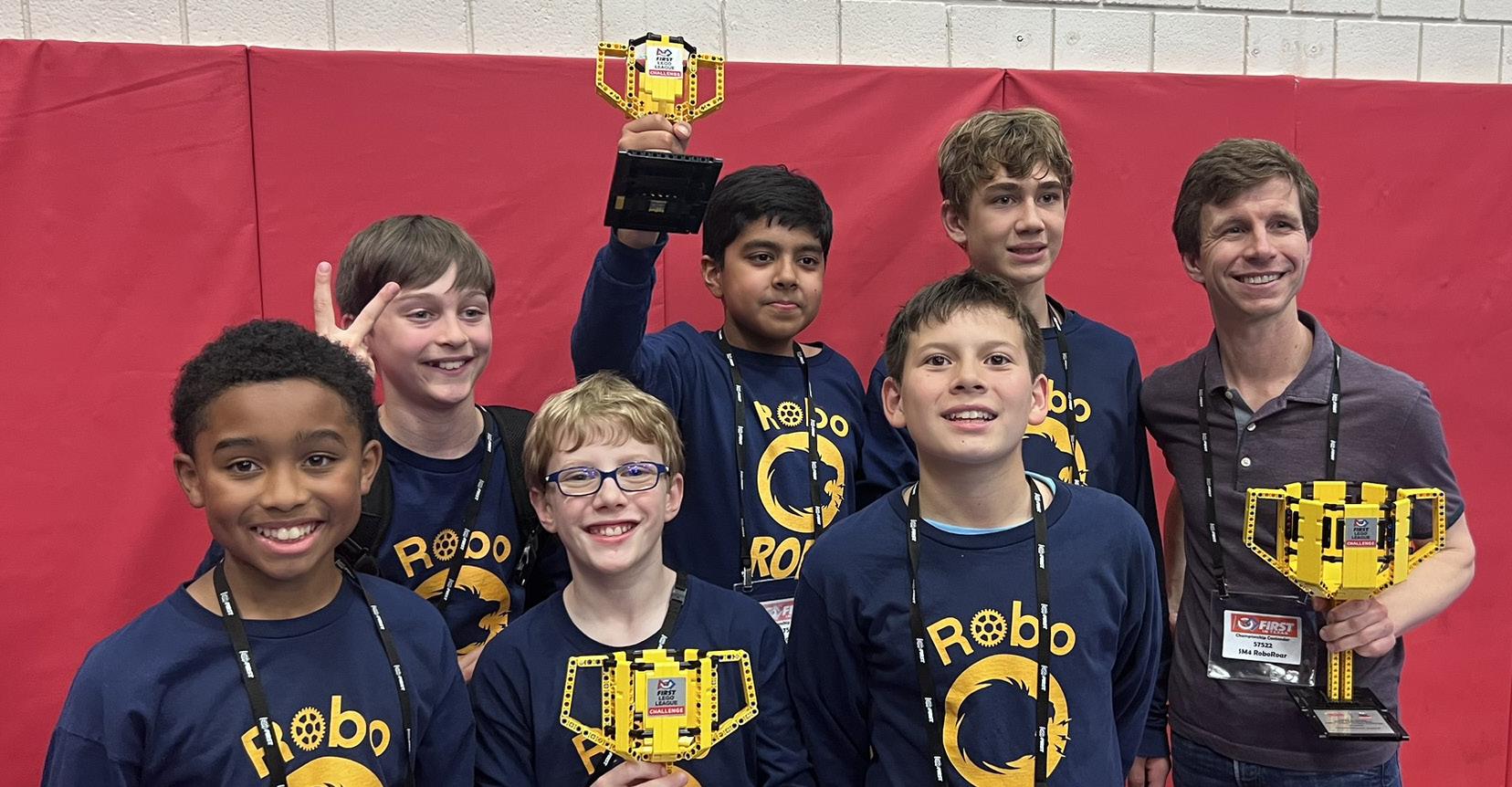
of what is scored. Teams are also scored on an innovation project, where they create solutions to various-themed problems, including how to create clean energy, and a core values category, which assesses how well they represent the six core values of FIRST: discovery, innovation, impact, inclusion, teamwork, and fun. Winning teams are not only proficient in the robot game but also adept at problem-solving and maintaining professionalism.
“The teamwork aspect is really hard. Learning to work together – the interpersonal relationships and [cooperation] is [arguably] the hardest part of First Lego League,” Mayer said.
The children learn the art of building robots and the fundamentals of engineering by working with various LEGO beams and pins. They also gain an understanding of coding through their work with software
called SPIKE Prime, which can connect to the robot and upload Python or block code. While the St. Mark’s teams primarily utilize block code, the programs can still be highly intricate, as the robot often needs to make multiple trips.
“It’s really just about the logic that you’re creating for the algorithms. That’s what the kids learn,” Mayer said.
Young Marksmen are taking more initiative and diving into STEM topics at earlier and earlier ages. What really stands out, however, is their dedication — they’re not only showing up to meetings but also putting in extra hours on their projects, often sacrificing free time to complete objectives and go above and beyond.
Gathering once a week after school and on Sundays, the teams come together with one purpose in mind: to engineer. As the months go on, the time commitment can

become more strenuous, and students are put to the grindstone: “As the competitions get closer, they could probably pull close to 10 hours a week,” Mayer said.
At its core, the St. Mark’s FIRST program offers students more than just an introduction to STEM. It provides them with an opportunity to build crucial life skills and delve into topics at an age where other avenues of exploration simply aren’t available. Ultimately, that is what this program is for: stimulating innovation and developing problem-solving skills applicable to a vast array of fields.
“It’s the difficulty in the struggles that make them really learn,” Mayer said.“As a whole, I’ve seen the kids in the program really mature and step up as the competition gets stiffer.”
Story Benjamin Standefer
Photo Courtesy RoboRoar
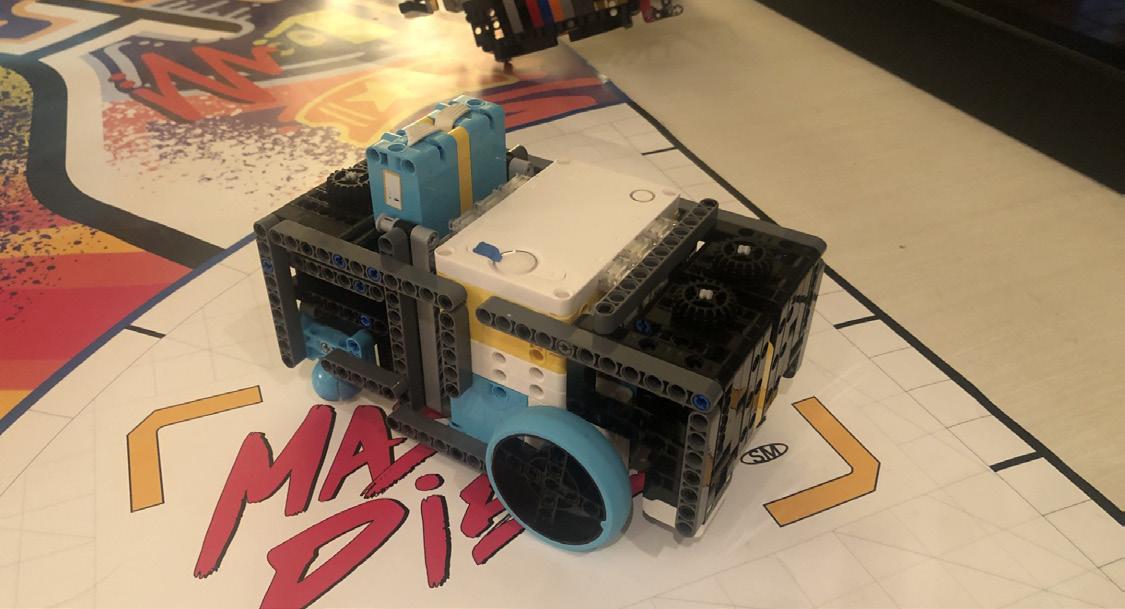


In the fleeting moment right before totality, eclipse viewers can see a sliver of the Sun’s rays poking through the Moon. This phenomenon, called Baily’s beads, creates this “diamond ring” effect due to the presence of craters, valleys, and mountains on the moon. This section celebrates the beauty of imperfection — just as craters and valleys are scattered over the corrugated surface of the moon, each of us possesses unique imperfections that contribute to our individual beauty. It encourages students to pursue their goals relentlessly on their journey despite the challenges they may encounter; for students to embrace failure as a “crater” that embellishes and complements the final result, rather than as a scar. Things will always turn out just fine.
As moon
slowly engulfed the sun, it was as if the city took a long breath. Spectators stopped to watch. Cars slowed down, students filed out of classrooms, and businesses temporarily paused.
As 1:40 PM approached, all of nature could sense totality’s arrival. Birds started to roost, coyotes began howling, and crickets chirped as if it were midnight.
[Seay] was really excited about seeing the total solar eclipse that came through Dallas [on April 8th]. He really wanted to make it to this eclipse, but he passed away about a decade ago. So there were several hundred alumni on campus in part to celebrate his life and career.
KENNETH OWENS ‘89
Chemistry instructorSolar eclipses are a rare and majestic natural phenomenon. They occur in the same location roughly every three centuries, but they have captivated humans for millennia.
And on April 8th, 2024, the whole of St. Mark’s was fascinated by the total solar eclipse over Dallas. The school blocked out a whole period for the event, set up educational planetarium viewings for every student on campus, and bought hundreds of glasses for the viewing. Students and teachers gathered at Hunt Stadium, and hundreds of alumni also returned to Arthur P. Ruff Field to view the rare astronomical occurrence. In addition to those at St.
Mark’s, millions of spectators also traveled towards the path of totality from across the United States to observe this natural phenomenon. Hotels within the path of totality experienced an almost 1000% increase in bookings.
“To be able to experience something as once in a lifetime as this on campus with a lot of my closest friends was really powerful,” said junior Neil Yepuri, who was among the hundreds of students captivated by the eclipse. “It’s not going to happen here for another 300 years. So being lucky enough to be here, while that happened, and being able to be around the people I care the most about was really amazing.”
One of the main coordinators of the school’s eclipse viewing was current AP Chemistry teacher Ken Owens ‘89.
“This was my first total solar eclipse,” he said. “I’ve seen a couple of partials and a couple of annular eclipses. But this year’s eclipse was the first time I’ve had full coverage.”
For Owens and other alumni, the solar eclipse also held sentimental value as a tribute to a former mentor.
“There was a teacher and science department chair here for thirty years named Steve Seay,” Owens said. “He taught so many Marksmen in middle school Earth science, geology, and astronomy. For example, [Dan] Northcut ‘81, our environmental science teacher, was his protégé.”
The advent of modern science has allowed astrophysicists to path the orbits of the Earth, Moon, and Sun, thereby enabling accu-


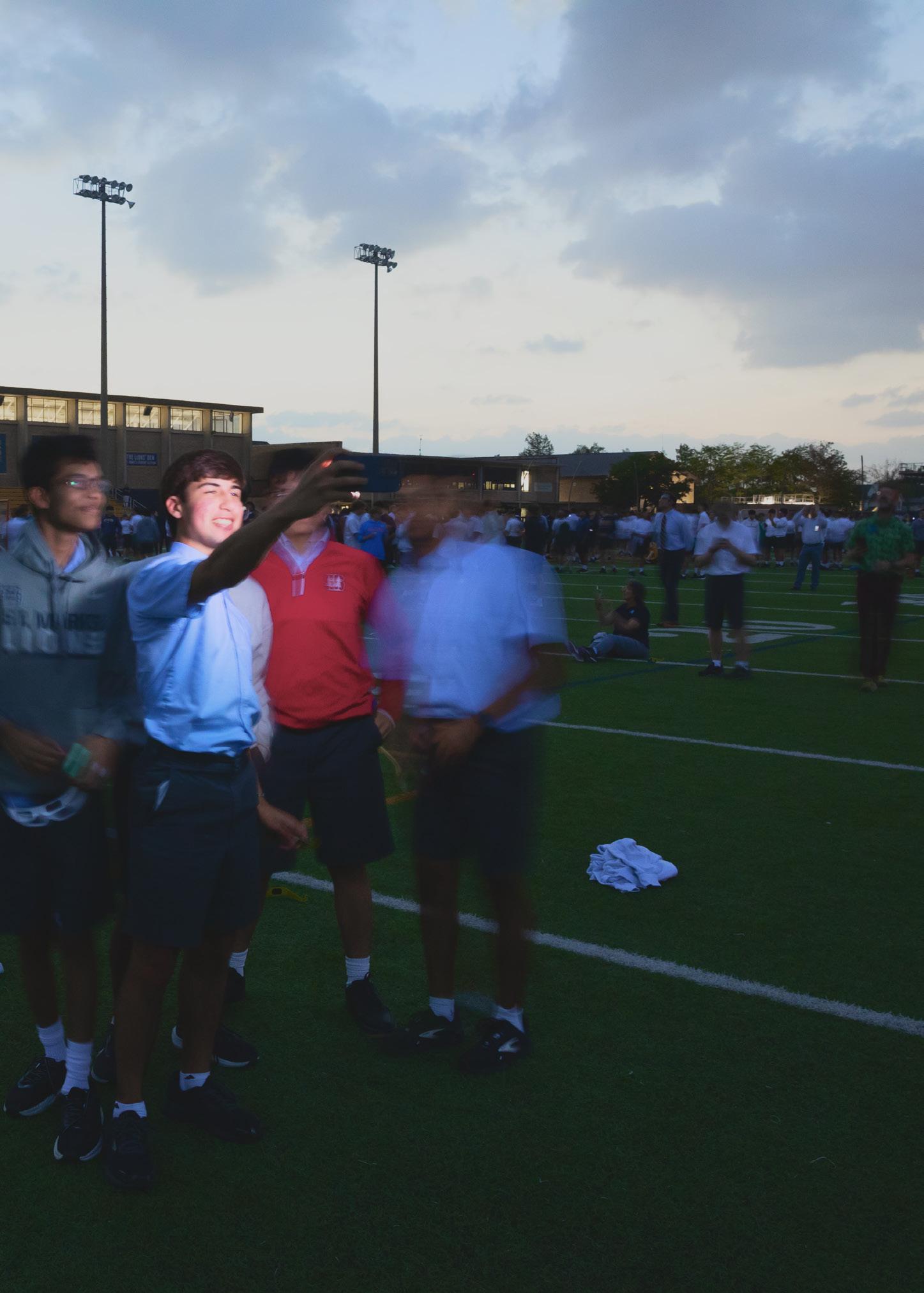


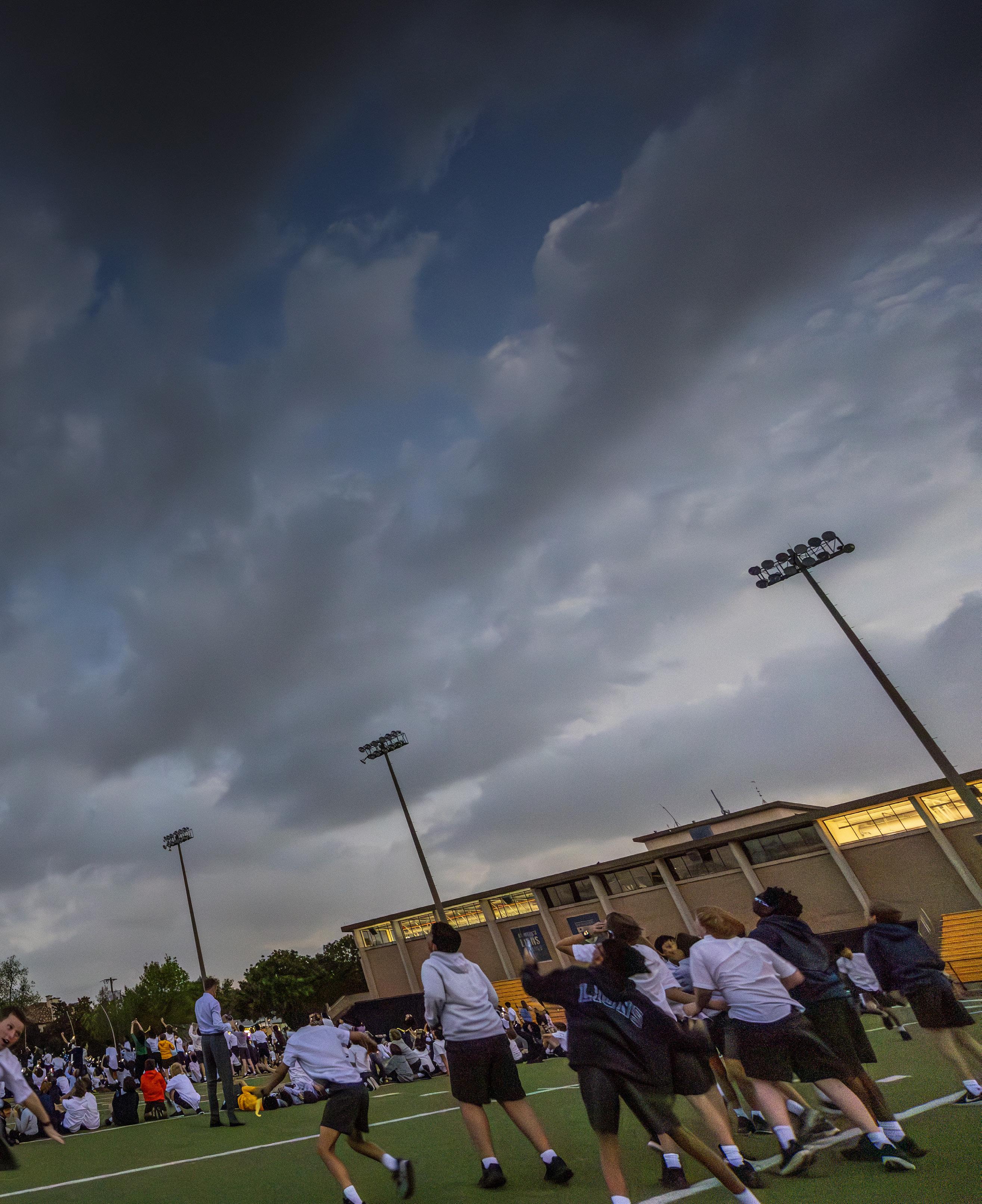
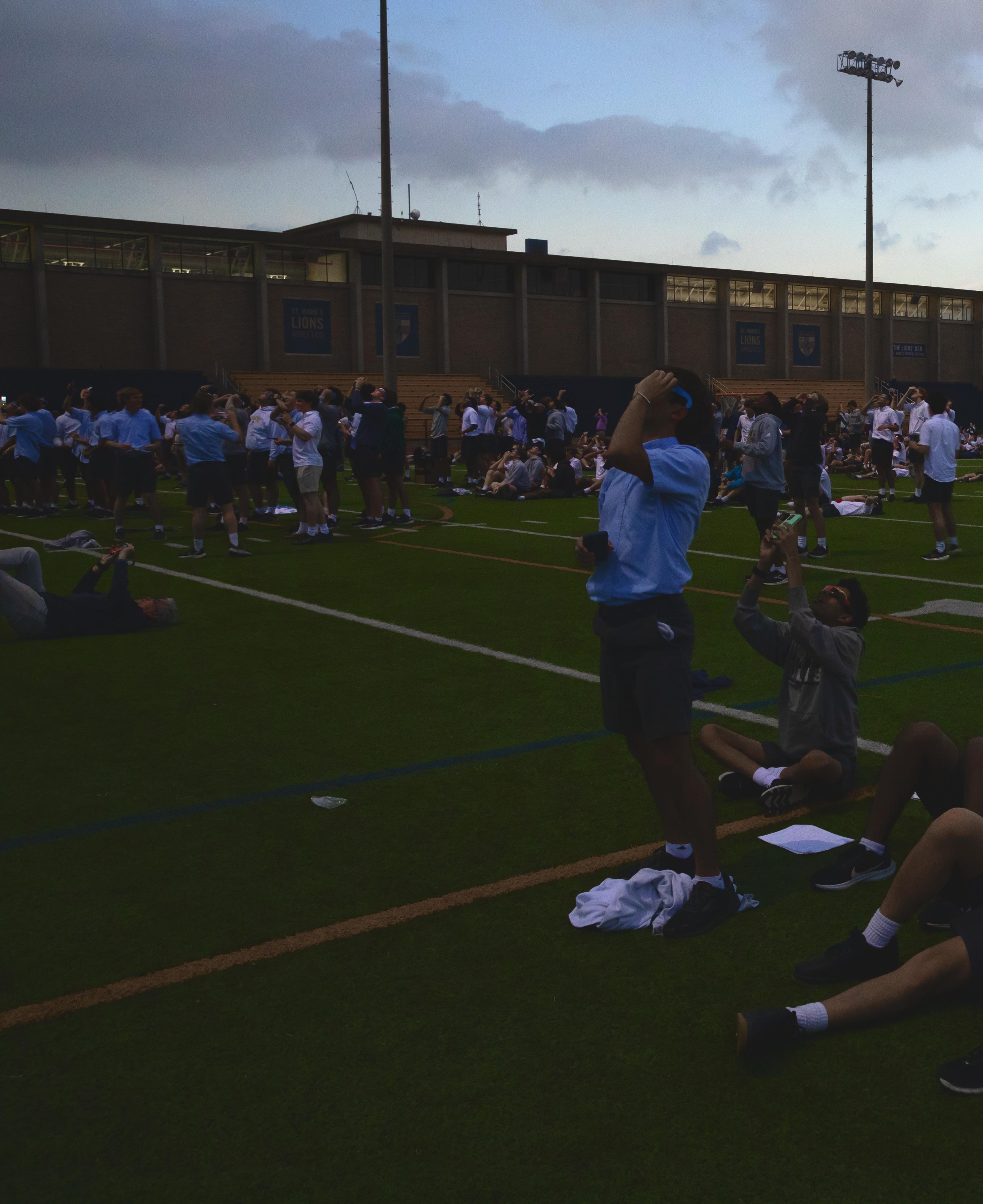
rate predictions of future solar eclipses. So, this year’s total solar eclipse has been known since long before Seay taught.
“He was really excited about seeing this total solar eclipse,” Owens said, “But he passed away about a decade ago. So several hundred alumni were on campus in part to celebrate his life and career.”
For Owens, his passion for science and astronomy from a young age created more anticipation for this eclipse.
“I’ve had a telescope since I was seven years old,” Owens said. “And I just think [eclipses are] fascinating. I’ll probably never get to go [to the moon], but at least I can look.”
This eclipse is also an important event for Owens because of its extremely low rate of occurrence. It’s the only chance for him to see a total eclipse passing over Dallas in his lifetime, as the next is projected to happen in 2317.
“This total eclipse was extremely rare,” Owens said. “There was one in Texas back in the 1870s, then there was the partial eclipse for us seven years ago. The next total eclipse to cross the continental United States will be in 21 years –2045.
Otherwise, the only other eclipse between now and then that touches United States territory will pass through western Alaska in 2029.”
The reason solar eclipses are rare is due to the precise movement of the Earth, Moon, and Sun system – in order for an eclipse to occur, there must be precise alignment between the three heavenly bodies.
The astronomy elective is a good course… Using the planetarium, which we don’t do as often as we should, is good. Anything that gets kids more excited about astronomy is always a good thing. And the eclipse was one of those events.
KENNETH OWENS ‘89 Chemistry Instructor
“A total solar eclipse occurs when the moon lines up between the Earth and the Sun and is close enough to the Earth to blot out the Sun entirely,” Owens said. “Because the moon does not orbit in the same plane with the Earth as the Earth orbits around the Sun, you can only really get total solar eclipses in the spring and in the fall.
Otherwise, the moon’s shadow misses the Earth and you get nothing. These are called eclipse seasons.”
However, eclipse seasons are only the first in a set of specific celestial requirements that make an eclipse happen.
“If the moon is too far from the earth due to its orbit being elliptical, you can get an annular eclipse where the moon cannot block the entire Sun, producing a ‘ring of fire’,” Owens said. “That happened this past October, and that’s going to happen again this October in Patagonia. So the school collected a bunch of the glasses [used for this eclipse], and we’re going to send them down there as donations for students in Argentina and Chile.”
Unfortunately, total solar eclipses won’t be around forever. As the moon drifts off course, further away from the Earth, it will eventually not be able to cover the sun entirely even at perigee, the point in orbit where the moon is closest to Earth.
“At some point, it would be far enough away that you will get no more total solar eclipses; it will be impossible,” Owens said.
“Hundreds of millions of years ago, the moon was close enough [to the Earth] that even at apogee, which is the point in the moon’s orbit where it is the farthest it can be from the Earth, there would still be a total solar eclipse.”
While the eclipse had created a buzz around astronomy on campus, Owens believes that students’ interest in astronomy should extend beyond April 8th.
“Using the planetarium, which we don’t do as often as we should, is good,” Owens said. “Anything that gets kids more excited about astronomy is always a good thing. And the eclipse was one of those events.”
And so, Owens encourages students to pursue these interests at school.
“Astronomy is an elective here, and given the rest of the curriculum that’s appropriate,” Owens said. “But you can get people excited about it and enjoy it on their own. If [students] decide they want to pursue some astronomy in college, [the school] can give them [ample education].”
The long-anticipated phenomenon’s success, however, was in some jeopardy; meteorologists had forecast a fully cloudy day on
THE ECLIPSE Hunt stadium filled with students, captivated by the eclipse (Background). Using the shadow of the eclipse, a simple visual of the eclipse can be seen (Bottom Right).

April 8th. Despite the cloudy weather for most of the day, however, the school ended up with a stroke of luck.
“It was kind of cloudy, and then clouds went away and came back; it was really sad and frustrating,” Owens said. “The clouds broke right when totality [occurred] and [came back] right when it ended. But right then, it was clear enough for us to see it, so we still were able to get a good experience.”
Yepuri shared the same enthusiasm for the moment.
“We had already known going into it that we may not even get to see totality and that the sun might be blocked out fully,” said Yepuri. “So, when the clouds cleared up [right as totality hit], it was like a reward. We learn a lot about delayed gratification [at St. Mark’s], so when something like this happens, it really makes you understand that concept. When you’re expecting something for that long, and it finally comes through, it’s really, really awesome to see.”


During totality, darkness envelops the earth. As day turns to night, the sky undergoes a metamorphosis — vibrant blue to dark black. The stories in “Totality” represent the ongoing discoveries and technologies scientists are developing to revolutionize the world and make it safer for all of us. This section celebrates scientific discoveries in various fields and showcases how unique scientific exploration will transform the world.
Photo Preston Ghafar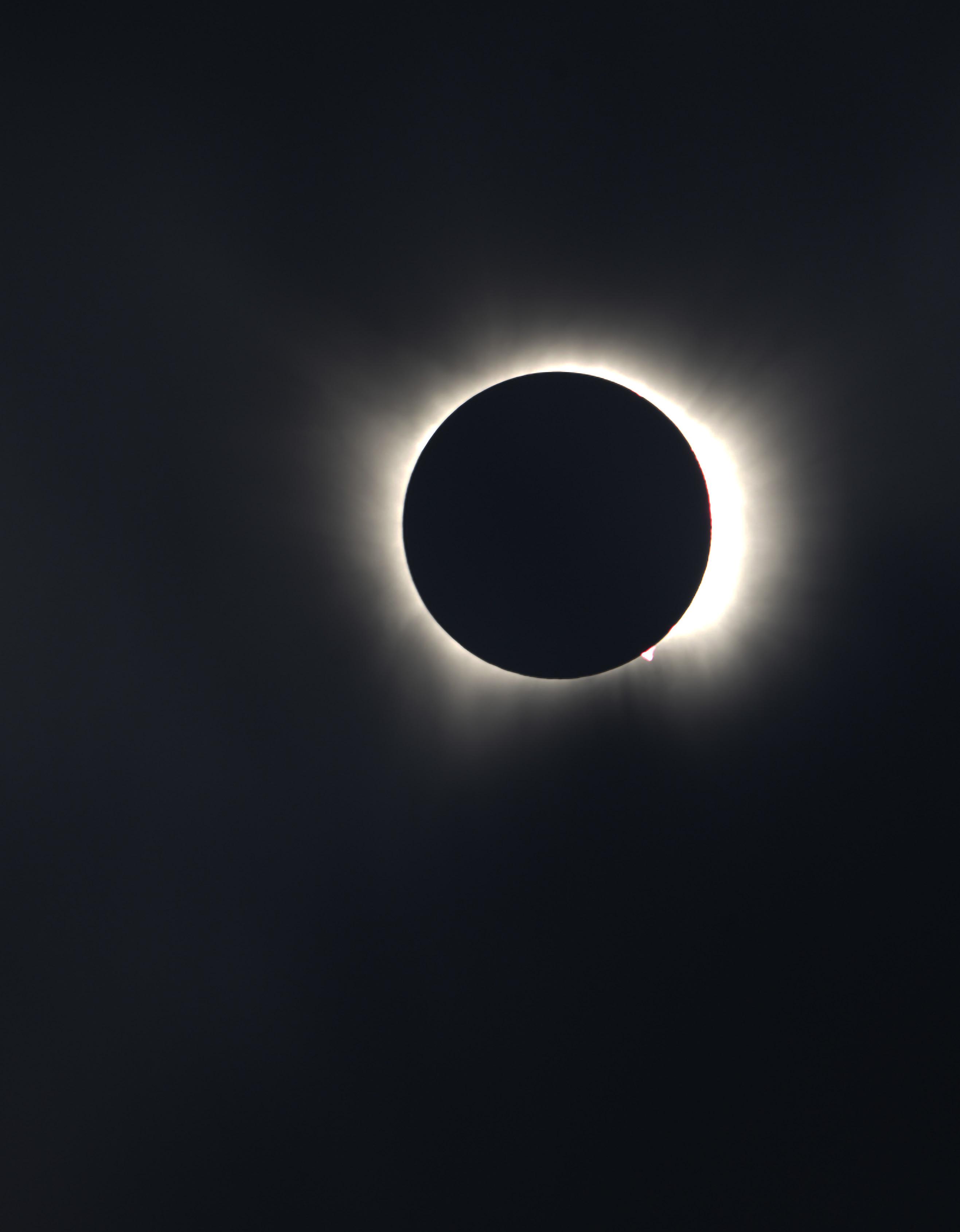
DECODING DISORDERS
FINDING A CURE
GENOMIC GEMS
PERSPECTIVES OF AN MD/PHD
A NEW FRONTIER OF SURGERY SURGICAL INNOVATIONS
DERDISORDERDISORDERDISORDERDISORDERDIS
ORDERDISORDERDISORDERDISORDERDISOR
DERDISORDERDISORDERDISORDERDISORDERDIS
ORDERDISORDERDISORDERDISORDERDISOR
DERDISORDERDISORDERDISORDERDISORDERDIS
ORDERDISORDERDISORDERDISORDERDISOR
DERDISORDERDISORDERDISORDERDISORDERDIS
ORDERDISORDERDISORDERDISORDERDISOR
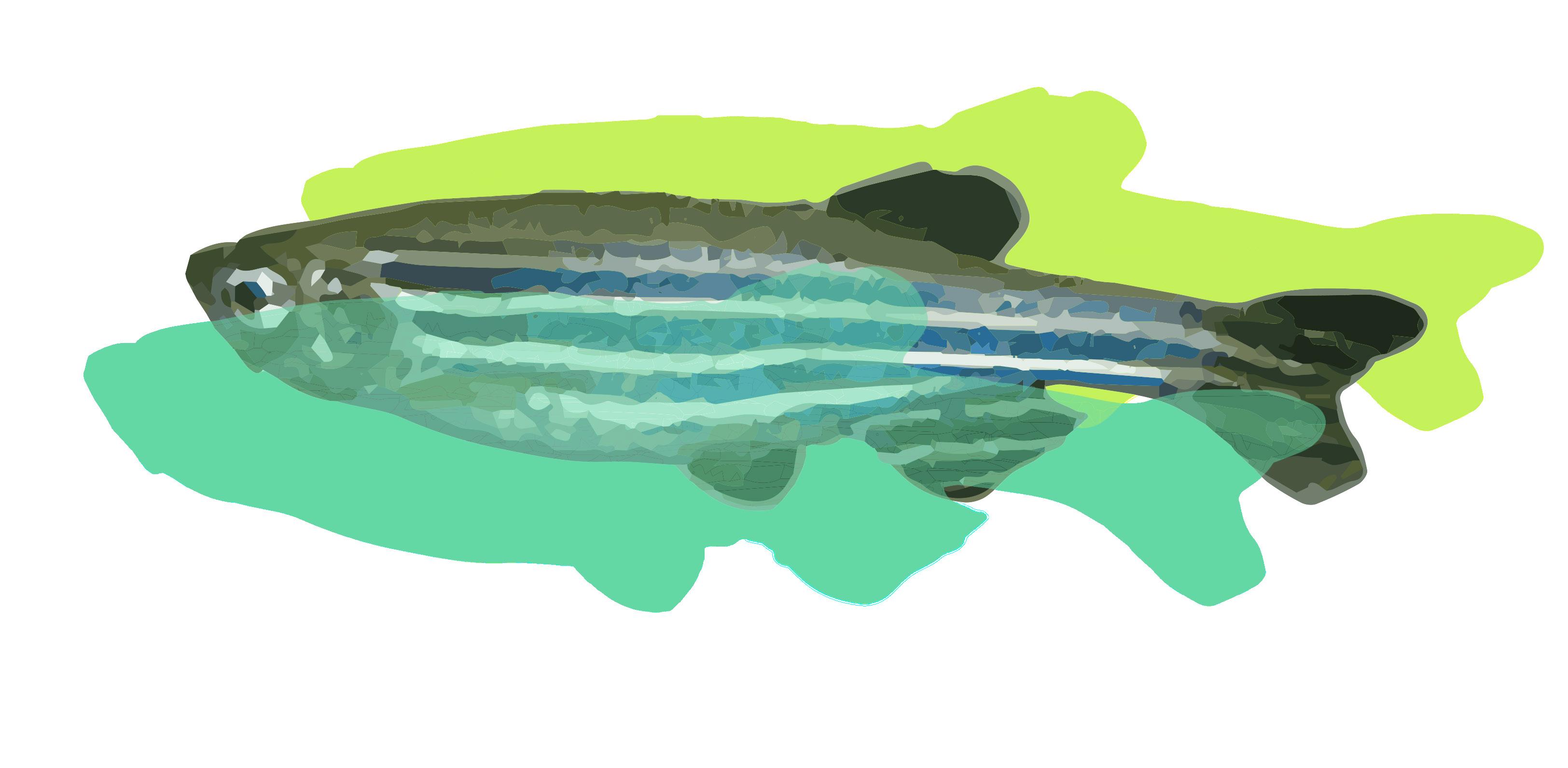
DERDISORDERDISORDERDISORDERDISORDERDIS
ORDERDISORDERDISORDERDISORDERDISORDER
DISORDERDISORDERDISORDERDISORDERDISOR
The inner workings of neurodevelopmental disorders have stumped scientists for centuries. However, a new wave of scientists, using the lastest biological techniques, have been making significant advances in our understanding of these disorders using, of all animals, zebrafish.
ORDERDISORDERDISORDERDISORDERDISOR
eurodevelopmental disorders are extremely common and are some of the most intricate yet fascinating disorders within the human body. Chances are, most people probably know or have seen somebody else with ADHD, one of the most common neurodevelopmental disorders. Despite the widespread nature of neurodevelopmental disorders, they are not well understood. Nevertheless, scientists around the world are focusing their best efforts on decoding these enigmatic, yet common disorders.
“The embryos and larvae [of zebrafish] are largely transparent, so we can watch the nervous system as it develops and label it with different fluorophores,” says Sirotkin. “The larvae [also] respire through their skin, and that means they can take up small molecules.”
Furthermore, zebrafish are very social creatures. This makes zebrafish especially useful in studying behavioral disorders, like autism.
Grin2B is mutated in zebrafish, Sirotkin observes two things: a social deficit in the zebrafish, and a deficit in the interneurons in a region of the zebrafish brain that’s thought to be homologous to the corresponding region in humans. Specifically, Sirotkin observes the lack of interneurons in the striatum and the amygdala, which are regions that are impacted by autism.
DERDISORDERDISORDERDISORDERDISORDERDIS ORDERDISORDERDISORDERDISORDERDISOR
“[Forming schools of fish] is all about looking at your neighbors, seeing what they’re doing, and responding appropriately,” Sirotkin said.
One of the leading experts in this field is Howard Sirotkin, Professor of Neuroscience at Stony Brook University in Long IslandHis research focuses on autism and epilepsy --- two disorders that are often caused by defects in a subclass of glutamate receptors called NMDA receptors.
To assess a social deficit in zebrafish, Sirotkin uses a ten-lane apparatus. At the top and bottom of each lane is a window, and behind one window is a wild-type zebrafish, and behind the other is empty water. Each lane is a test for the zebrafish.
DERDISORDERDISORDERDISORDERDISORDERDIS
“Glutamates are the principal excitatory neurotransmitters (neuron stimulators) in our brain,” Sirotkin said. “70% of our synapses, or connections between neurons, in our brain, are excitatory, and NMDA receptors, [which] we’re interested in, are one of the key subclasses of glutamate receptors.”
People who have epilepsy would more likely want to be cured,” says Sirotkin. “[But] not all individuals who are autistic would say they want to be cured. They’re neurodivergent, they bring a certain skill set to the world, and they see things differently… that’s their strength.
DR. HOWARD SIROTKIN Professor of Neuroscience“We ask a simple question, which is: ‘Does the test zebrafish prefer to swim next to the window where there’s a fish or the empty window?’” Sirotkin said. “By monitoring the position of the test fish, we can come up with a social preference index, which is essentially just asking if they prefer being with other fish.”
ORDERDISORDERDISORDERDISORDERDISOR
Present in all vertebrates, NMDA receptors are ion channel receptors. When glutamate binds to one of these receptors, the ion channel opens and allows calcium and other ions into the cell. So these receptors play a large role in signaling throughout the nervous system.
Sirotkin describes his research as analogous to ‘personalized medicine.’ In some cases, he takes mutations observed in patients with autism and introduces them into zebrafish models. Often, these mutations change only a single amino acid, but could drastically change the function of the receptor.
Because fish are social creatures, wild-type zebrafish will display a strong social preference, swimming closely to other wild-type zebrafish, while test zebrafish, like ones with Grin2B defects, have very weak, if any, social preference, preferring to stay next to the empty window.
DERDISORDERDISORDERDISORDERDISORDERDIS
Still, studying autism remains challenging because autism has a wide range of clinical phenotypes observed in individuals.
“They’re also involved in many higher-order brain functions like [neuro]plasticity, learning, and memory,” Sirotkin said. “So it’s not surprising that when you have defects in [the NMDA receptors] you get intellectual disabilities and autism and epilepsy.”
“In the case of NMDA receptors, the receptor is still there, but some aspect of its function is altered either in a gain of function or a loss of function,” says Sirotkin.
These mutations are introduced into zebrafish to study the effects and possible impact of the mutation on areas of the brain.
“The penetrance for autism is not 100% by any stretch of the imagination,” Sirotkin said. “But if you look at studies of twins, if one twin has autism, the other twin is more likely to have autism than the general [population].”
ORDERDISORDERDISORDERDISORDERDISOR
Neurodevelopmental disorders are studied in various model organisms, including species that have certain properties like high reproduction rates, low generation times, and ease of study. Sirotkin uses zebrafish as his model organism of choice.
“[NMDA receptors] are involved in neurogenesis and in the generation of different kinds of neurons,” Sirotkin said. “So we’re hoping to be able to discern how particular mutations cause pathology.”
Sirotkin also points out, however, that some environmental factors are speculated to cause autism. Paternal age, both a genetic and environmental influence, has been shown to be an influence on autistic offspring.
DERDISORDERDISORDERDISORDERDISORDERDIS
“The amino acid sequence of zebrafish NMDA receptors, in many key functional domains, is almost identical to those in humans,” Sirotkin said. “The physiological properties of the zebrafish NMDA receptors are very similar to that of mammalian NMDA receptors.”
Zebrafish hold many experimental advantages over mice or other major model organisms.
Despite all these advantages in working with zebrafish, humans exhibit social and emotional behaviors much more complex than zebrafish do. For instance, autistic zebrafish don’t exist. However, Sirotkin says that studying, understanding, and modeling behavioral defects in a zebrafish is extremely relevant to the study of neurological disorders in humans.
Looking to the future, Sirotkin imagines that pharmaceuticals could help alleviate signaling defects within the brains of individuals with neurodevelopmental disorders. However, Sirotkin brings up the question of whether people with these disorders want to be cured.
ORDERDISORDERDISORDERDISORDERDISORDER
Sirotkin has performed several studies on a specific NMDA receptor called Grin2B, which mutates in humans with autism. When
“People who have epilepsy would more likely want to be cured,” says Sirotkin. “[But] not all individuals who are autistic would say they want to be cured. They’re neurodivergent, they bring a certain skill set to the world, and they see things differently… that’s their strength.”
DISORDERDISORDERDISORDERDISORDERDISOR
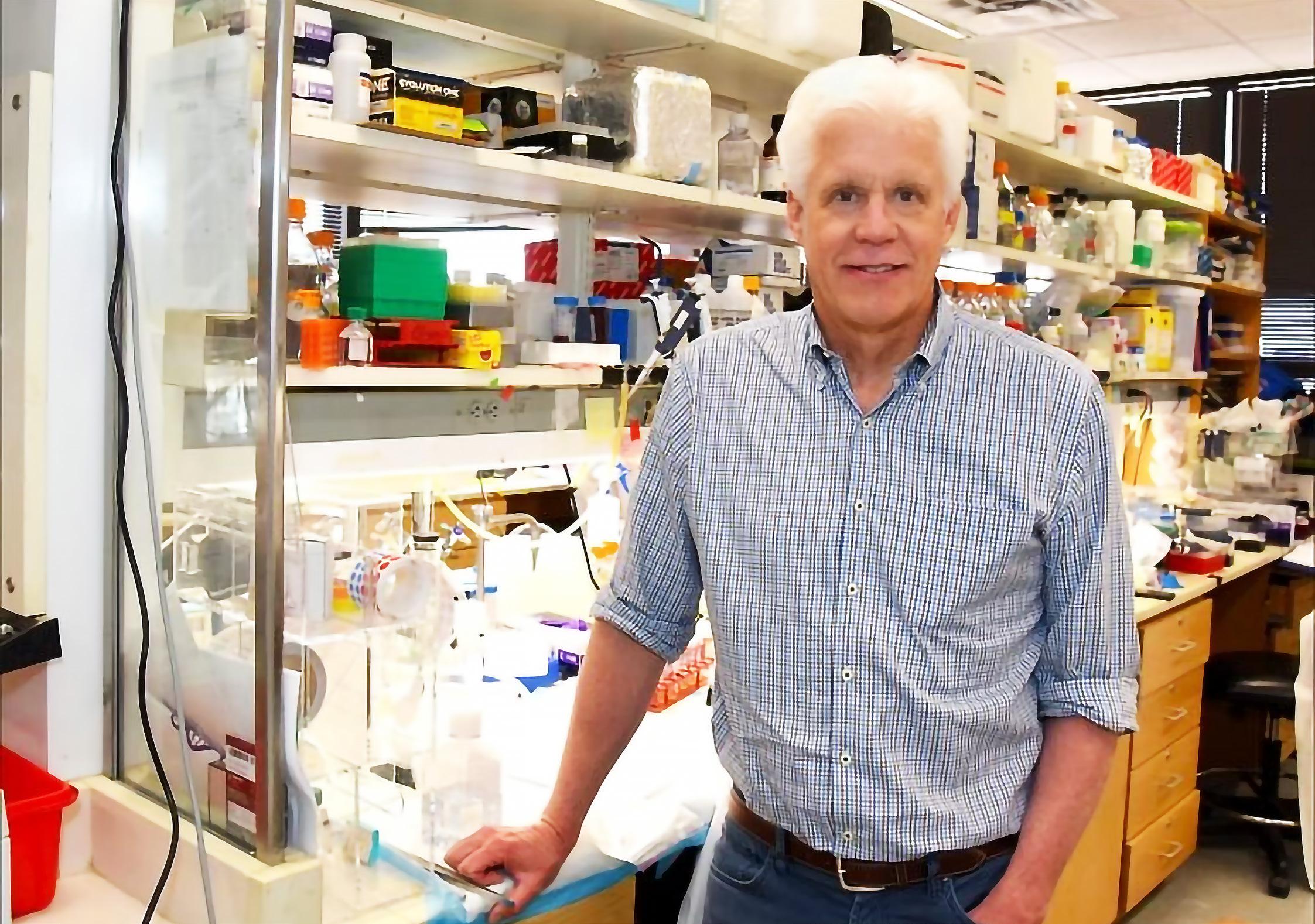
Muscular dystrophy, a genetic disease previously deemed incurable, affects the lives of hundreds of thousands of people across the U.S. each year. However, scientists are using a revolutionary new tool, CRISPR, to develop groundbreaking cures for this crippling disease.
Your child will never live a normal life.
When an unborn child is diagnosed with a genetic disease, a family’s world can be flipped upside down.
No currently available option presents a perfect solution. But what if there were a way to avoid this dilemma entirely?
In the past decade, scientists have made strides in curing genetic disorders, taking advantage of the recently discovered “clustered regularly interspaced short palindromic repeats” (CRISPR) gene editing system.
The system is made up of a Cas endonuclease, which cuts DNA, and a guide RNA (gRNA) sequence that directs the Cas protein to a specific locus on the genome. These two components allow the cell to repair the cut DNA in a specific way, leading to a desired change in the genome.
StoryThese advancements gave scientists the potential to precisely correct deleterious mutations that cause many genetically inherited diseases, which was unimaginable prior to the discovery of CRISPR.
One such scientist is Eric Olson, Robert A. Welch Distinguished Chair in Science at UT Southwestern. At the onset of his career, more than 40 years ago, he became interested in research that could have biomedical applications.
“I wanted to work on something that was tractable, meaning I could study it in a tissue culture dish in a laboratory,” Olson said. “And muscle and heart seemed like really fertile ground for discovery and disease research.”
Though he began his career discovering many of the key genes and mechanisms responsible for development of the heart and skeletal muscles, he also focused on disease-oriented research. The biggest challenge in his line of sight was muscular dystrophy, a seemingly incurable muscular degenerative disease. It would take the discovery and optimization of CRISPR gene editing to finally give him a strategy to cure it.
“The most severe [form of] muscular dystrophy is called Duchenne muscular dystrophy,” Olson said. “The disease is caused by an X-linked mutation in dystrophin, the largest
gene in the human genome. [Dystrophin] underlies the membranes of all muscle tissues and maintains muscle integrity. If a patient has a mutation that results in dysfunctional dystrophin, their muscles are highly fragile, and these [patients] become confined to a wheelchair and a respirator at an early age and tend to die in their twenties.”
One
thing
I’ve
learned
is that science will always exceed your imagination. So no matter what you think, it will go beyond what you think.DR. ERIC
OLSONProfessor of Molecular Biology
Virtually all of these patients affected by muscular dystrophy are male, as dystrophin is encoded on the X chromosome, of which males have only one copy. Only one mutated X chromosome needs to be passed down in order for a male to inherit the disease, while females with one mutated X chromosome would have another wild-type copy to allow for normal dystrophin production. There are thousands of known mutations that affect dystrophin, meaning that Olson and his team had to painstakingly design exact genome edits for each different mutation.
To correct a specific mutation, Olson’s team first sequences the patient’s dystrophin gene to determine what specific mutation the patient has. Normally, precise nucleotide edits are made using a mechanism called homology directed repair (HDR). In this method, a piece of donor DNA is introduced into cells together with Cas and a gRNA that targets the mutated site in the genome. The donor DNA contains a pair of homology arms (DNA sequences homologous with the genome) flanking the wild-type sequence that will correct the mutation following the Cas-produced double-strand break. However, this technique is only effective on the dividing cells of the body.
Since mature skeletal muscle cells do not divide, Olson had to turn to an optimized CRISPR method called base editing to directly install point mutations into DNA in these non-dividing cells to restore protein function. Once modified to match the patient’s specific needs, the gene-editing system is carried on an Adeno-Associated Virus (AAV) delivery vehicle and is injected into the bloodstream. “The virus can infect non-dividing cells (like skeletal muscle), and does not integrate into the eukaryotic genome, meaning that unwanted mutations are rare,” Olson said. “The version I used, AAV9, preferentially targets skeletal muscle and heart.”
Olson has already proven the safety and efficacy of his gene-editing system in mice and
monkeys and is moving to human clinical trials in the very near future. With this system, his lab has been able to correct around two-thirds of Duchenne muscular dystrophy mutations. That means over 10,000 lives could be saved each year. For now, Olson said, he’s “taken it as far as science can go. It’s up to the FDA now.”
In December 2023, the FDA approved the first-ever CRISPR disease cure for sickle cell anemia. This disease is caused by a single point mutation that replaces valine, an uncharged amino acid, with glutamic acid, a charged amino acid, in ß-globin, one of the subunits of hemoglobin. This single amino acid change leads to improper protein folding and the production of sickle-shaped red blood cells, resulting in oxygen shortage and blood clotting.
The FDA-approved treatments, Casgevy and Lyfgenia, correct the sickle cell point mutation by taking hematopoietic stem cells from the bone marrow, which give rise to all the blood in the body, and editing them in culture. Then the edited stem cells are put back into the patient.
It is really transformational, and the pace of discovery in this field is breathtaking. When I started my lab… the human genome was not even sequenced… in just a portion of my career, we’ve [sequenced]… virtually every organism on the planet and [have learned how] to edit the book of life.
DR. ERIC OLSON
At first glance, this cure may seem like a panacea for the 20 million individuals affected by sickle cell anemia.
“But all the editing is done outside the body – in a process called ex vivo (out of body) editing – which costs three million dollars per patient,” Olson said.
The astronomical cost of ex vivo editing, along with the intense chemotherapy that patients must undergo before the reintroduction of hematopoietic stem cells, makes these sickle cell cures impractical for the majority of the affected world population. But the fact that this treatment has even made it onto the market is a huge milestone for the technology.
On the other hand, in vivo editing involves injection of the gene-editing system straight into patients, removing the need for chemotherapy and culturing edited cells in a dish. Olson’s muscular dystrophy correction is an example of such a system, which would be much more accessible than the current sickle-cell treatment.
CRISPR-Cas technology has not only
accelerated disease research in the past decade, but also permeated every niche of biological research. Before Jennifer Doudna and Emmanuelle Charpentier’s Nobel Prize-winning discovery, genome editing was expensive, complex, and time-consuming. But the optimization of CRISPR, Olson believes, has “allowed scientists from every molecular biology lab in the world to edit any gene and study its function.”
For example, if someone wants to study which segments of a protein are necessary for it to bind to another protein, they can quickly design many gRNAs targeting different regions of the protein and deliver these gRNAs into cells to generate mutations. Then, by observing the resultant variations in impaired protein-protein binding, they can determine which edited segments of the protein are necessary to its interaction with the other protein and select for specific mutations that destroy the protein’s binding capabilities.
In the past, this process could take months or even years. But now, virtually any scientist can design a CRISPR system and observe clear results in a matter of weeks, which has shrunk dramatically the time needed to make discoveries.
Even with a decade of optimization under its belt, CRISPR, originally used in prokaryotic innate immune responses, is still prone to off-target effects, which could lead to unwanted consequences. Naturally, scientists are trying to find a solution to this problem. Feng Zhang, one of CRISPR’s original discoverers, published last year a Nature article that explores Fanzor, a eukaryotic version of CRISPR. Fanzor has been shown to have DNA-editing capabilities, but it is “not completely optimized yet and is still in the process of being transformed for use in research,” Olson explained. Since it’s produced endogenously in eukaryotes rather than prokaryotes, however, Fanzor has the potential to become even more powerful and accurate than CRISPR, leading to lower risk of adverse off-target effects that could negatively affect patients and unborn children.
When asked about the pace of scientific discovery today, Olson said: “It is really transformational, and the pace of discovery in this field is breathtaking. When I started my lab, the human genome was not even sequenced. In just a portion of my career, we’ve [sequenced] virtually every organism on the planet and [have learned how] to edit the book of life. One thing I’ve learned is that science will always exceed your imagination. So no matter what you think, it will go beyond what you think.”

Genetic information and genes have formed the coding basis for virtually all life on Earth. But up until now, scientists were unaware of the specific controls the genome uses to maintain its fidelity.

FRUIT FLIES Fluorescent imaging of Drosophila samples from Yamashita’s lab
In the grand scheme of things, one lifetime is short. The average worldwide life expectancy for humans currently hovers around seventy years. Comparatively, the two thousand-year-old lives of California redwoods seem almost unimaginably long, but even they take up just a page in the history of life on Earth.
What persists past one’s lifetime and allows for the continuation of a species is the genetic information passed from generation to generation. These genetic codes have withstood billions of years of challenge and spread across the globe in a multitude of forms–from the buzzing insects of the Amazon to the penguins of the Antarctic and the kangaroos of Australia. But how exactly do genomes maintain their fidelity after thousands of generations? More specifically, how do genomes combat the buildup of detrimental mutations over such a long period of time?
The answers to these questions fundamental to life are complex. One researcher working to shed light on them is Dr. Yukiko Yamashita, a full professor at MIT’s Whitehead Institute. Her lab conducts research into the maintenance and proliferation of stem cells–unspecialized cells that can develop into cell types including sperm and egg cells.
Yamashita’s earliest memories of science came from her father’s admiration of Albert Einstein.
“He was always talking about [scientists] making discoveries, or understanding the world in the way that’s going to have an impact on us,” said Dr. Yamashita. “As a toddler, I didn’t quite understand what it meant, but my father made me think that science was super cool.”
After earning her undergraduate and graduate degrees from Kyoto University, Yamashita moved to the United States to pursue
her postdoctoral studies at Stanford University. There, she entered the vibrant field that would become her life’s work: stem cell biology.
During her PhD studies in Japan, Yamashita studied ‘perfect’ replication–the traditional version of mitosis students learn in a first-year biology course. However, during her postdoctoral research, she discovered that asymmetric cell division is surprisingly important in the maintenance of germline stem cells and other stem cells in the body.
[My father] was always talking about [scientists] making discoveries, or understanding the world in the way that’s going to have an impact on us.
DR. YUKIKO YAMASHITA Professor of Developmental BiologyTwo important properties of stem cells are the ability to infinitely divide (self-renew) and the ability to differentiate into specialized cell types. Most somatic cells including skin, muscle, and nerve cells become senescent (unable to continue progressing through the cell cycle) after a certain number of divisions. One of the reasons for cellular senescence is the gradual shortening of telomeres, repetitive six-nucleotide sequences on the end of chromosomes that help prevent DNA degradation. As these telomeres shorten after successive DNA replications, chromosome degradation occurs and cells eventually stop dividing. However, past experiments in which telomeres were prevented from degradation did not completely prevent cellular senescence, indicating that another genomic element could be involved in this process.
Yamashita’s lab has identified ribosomal DNA (rDNA) as another major player in stem
cells’ ability to divide infinitely. She explained that rDNA exists as a series of repeats scattered throughout the genome and is crucial for the formation of ribosomes, the organelles that synthesize proteins. An important observation Yamashita made was that a high number of ribosomal DNA repeats characterizes stem cells.
“[Sometimes], these rDNA sequences will form loops and excise from the genome, resulting in a reduction in the number of rDNA repeats in the cell,” Yamashita said. “When cells lose rDNA copies, they lose their replication potential and eventually become senescent.”
Stem cells counter this phenomenon and maintain high rDNA copy number by employing a mechanism called rDNA magnification. Yamashita explained that her lab has found that the key to this process is a type of asymmetric replication–asymmetric crossing over–which results in more rDNA copies being passed down to one daughter cell versus the other. In this way, stem cells maintain high levels of rDNA and are able to continue proliferating and differentiating into sperm and egg cells, preventing the loss of rDNA over thousands of generations.
Many scientific processes like rDNA magnification may take years or even decades to understand. But according to Yamashita, what motivates scientists to continue is that “science is about figuring out how things work, like a puzzle.” Each new discovery fills in a bit of the enormous biological puzzle and advances humankind’s understanding of life.
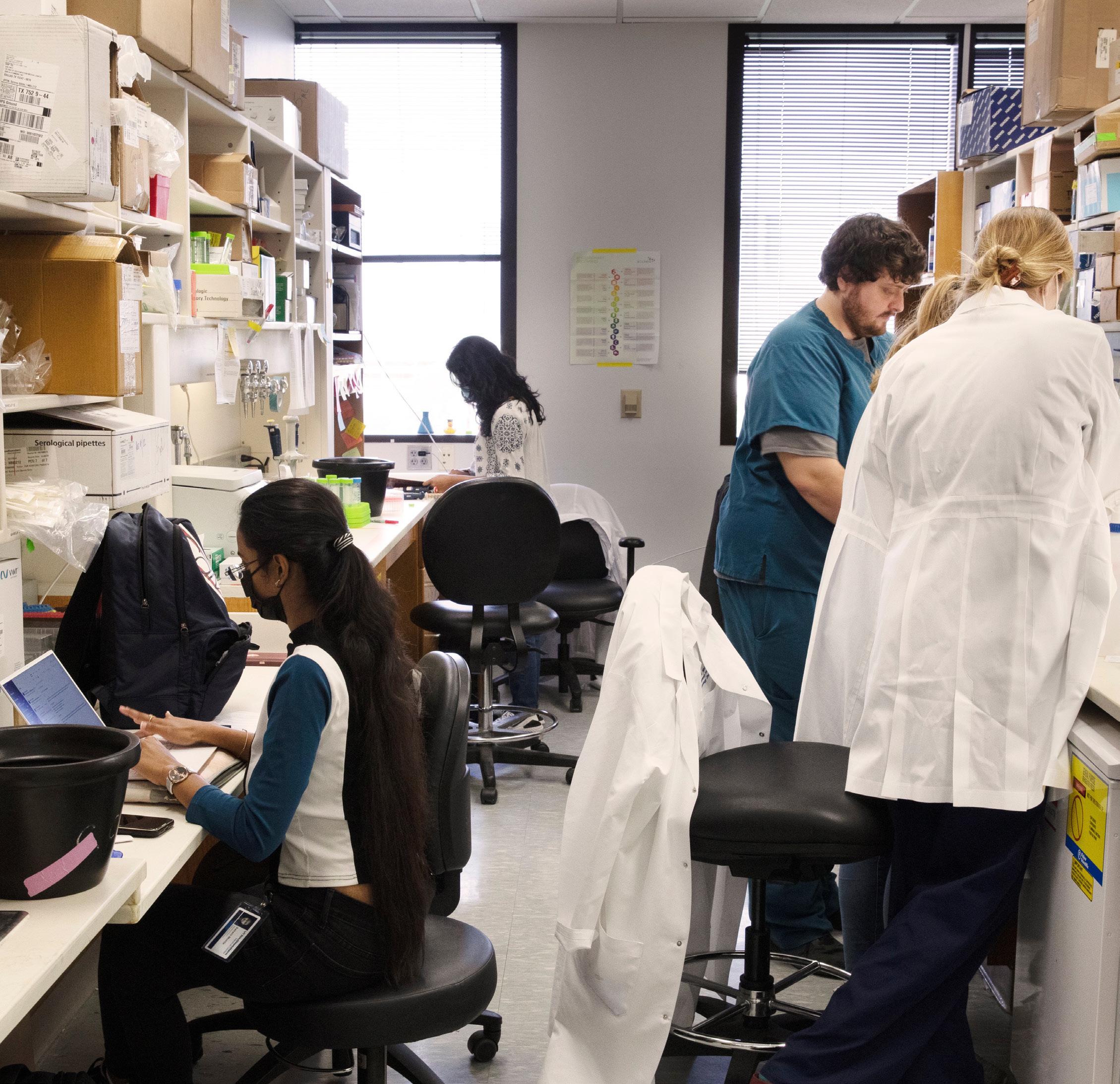
Traditionally, most biology students have gone down one of two career paths: research or medicine. These two careers require two different degrees: a PhD for scientists and an MD for doctors.
But as these two disciplines have moved closer together over the past few decades with the advent of translational research, research that seeks to directly benefit human health, a new combined degree has come to the forefront: the MD-PhD. This dual degree program allows students to gain experience in both the lab and the clinic, giving them insights that traditional grad students and med students are not able to learn. Dr. Isaac Chan, an MD-PhD, is an assistant professor specializing in immunotherapy and cancer research at UT Southwestern Medical Center.
One of the best things about the MD-PhD was that it really helped me form what I wanted to do, and that vision, however rudimentary, stuck with me.”
DR. ISAAC CHAN Assistant Professor of Internal MedicineEven in high school, Chan had already begun thinking scientifically and designing laboratory experiments. While his options were limited, he used creative problem solving to work around obstacles and make the most of his time. He believes that, while the research path isn’t for everyone, the principles of experimentation and innovation are applicable to any career.
“I was involved in varied activities like science competitions [during high school],” Chan said. “Extracurricular research is very structured for high school students now. Back then, it was all me.”
For one project, he wanted to study how bacteria changed in the human mouth. Since he wasn’t working in a professional lab, he had to make a styrofoam incubator in his family’s garage completely from scratch. After creating the incubator, Chan created a device that controlled the temperature that the bacteria were at with a lightbulb.
In college, Dr. Chan continued to pursue his passion for research while simultaneously exploring new avenues of interest.
“At Duke I was [on the] BME (biomedical engineering) track. I was interested in applied engineering. In one class, we had to create hydraulic systems and design microscopy setups for microgravity. It was really different from what I’d done before, but it was amazing,” Chan said.
“I also took the time in college to focus on other things; I edited the Asian Literary Magazine called Yellow Pages. It was one of my proudest achievements at Duke.” Chan elaborated.
Chan appreciated the chance to pursue interests outside of science. He even considered pursuing an English or history major, but ultimately chose the STEM route because it held his interest more consistently. He still acknowledges the value, however, in trying different activities in college.
“The question is: how do you intend to use the MD-PhD and integrate that into your career and research practice? What skills are you trying to gain during that unique training and how will you apply that later in life? I did my PhD research at Duke on liver regeneration, and then I switched tracks afterwards,” Chan said. “One of the best things about the MD-PhD was that it really helped me form what I wanted to do, and that vision, however rudimentary, stuck with me.”
Those choices led Dr. Chan to working at

UT Southwestern Medical Center, where he continues to hone his research skills while also tackling nuanced issues in other departments.
“For me, [UT Southwestern] has been really wonderful because I… get to see all the different ways people are approaching [and solving] problems. And on the clinical side, I get to see how we apply those lessons in different scenarios. So it gives me a different perspective on where the needs are,” Chan explained.
In Dr. Chan’s opinion, the most important thing to proper experimentation is flexibility. It’s paramount to consider different viewpoints to ensure you design and execute the ideal tests. This also requires comfort with failure when things don’t go as planned.
Chan has continued his interdisciplinary studies even as a full-fledged professor. “I like to think about theoretical physics as a paradigm to experimentation… [reading] Feynman and… Einstein [made me realize that] it’s all in the mind. That kind of thinking allows you to consider all the different ways [experiment] could fail and design experimental alternatives.”
Ultimately, Dr. Chan chose a particular career path that has fulfilled and rewarded him in numerous ways. While research and medicine are not for everyone, higher education is worth consideration given its inarguable benefits.
“A person who knows what they want to pursue will find that the PhD path is the right choice for them. If they value a clinically informed perspective and they feel that they can use that, then they should definitely choose that path,” Chan concluded.


Cancer still remains one of the most lethal malignancies, claiming the second-most lives of people worldwide behind cardiovascular disease. Dr. Baran Sumer, an otolaryngologist, utilizes two cutting-edge surgical technologies: minimally invasive surgery with robotic arms and fluorescent nanoparticles to aid in visualizing tumors.
What initially got you interested in the medical field and surgery in particular?
Dr. Baran Sumer: I got interested in medicine… by [following] orthopedic surgeons… and other physicians around the hospital. I used to go around and ask, “can I see what you do?” I became really, really interested in surgery, because, as a surgeon, you split your time between the clinic and the operating room. As soon as you get involved in that process of asking questions, you’ll be able to see if you’d like the field or not. If you do, then a lot of the people that you interact with can guide you through that process… Just get involved early.
How did your background as a surgeon drive you into cancer research?
BS: I’m a cancer surgeon operating on patients with head and neck cancer, and that led me to do cancer research. As an otolaryngologist (ear, nose, and throat doctor) by training, I took five years to learn about these organs in residency. I was interested in head and neck oncology, so I also did a fellowship in head-neck cancer surgery and reconstructive surgery. I mostly


sions or split your jaw. There were some pretty [even] before removing it… and these invasive procedures [left] patients with side effects in the head and neck region. Those side effects impact your speech, your swallowing, and your appearance. All these aspects are critical, and you compromise all those functions when you
One benefit the robot brings to the table is that it limits the invasiveness of the surgery
these tumors. [The robot] gives a much better view because it can see around corners with a high-definition 3D camera, and you’re able to very precisely manipulate things because the
So in addition to working in the clinic, you also collaborate with Dr. Jinming Gao’s lab. Could you talk a bit about the cancer-detecting fluorescent nanoparti-
simple: you want to remove all the cancer cells, and you want to leave all the normal cells behind. The problem is, it’s sometimes very hard to identify what’s normal and what’s cancer. always been a challenge, and so that’s what we started working on when we first started collaborating 16 years ago. How do we get these
tumors to pop out? How can we see them more accurately? And so we came up with this idea.
The science [of cancer] isn’t like this esoteric, abstract thing. For me, it’s actually going to help patients like on a day to day basis. For me, it’s been very rewarding.
DR. BARAN SUMER OtolaryngologistThe nanoparticles [we’ve developed] are composed of individual little polymer chains. There are hundreds of these that come together to form a micelle, or nanoparticle, which is like a little round ball. They’re very, very small, about 30 to 40 nanometers in diameter. The polymers have a hydrophilic portion [a water-loving portion] and a hydrophobic portion [water-averse portion]. When you have a whole bunch of these in an aqueous solution like water or blood, they self-assemble to form the nanoparticles, because the hydrophobic part wants to be in the middle of the micelle.
What is loaded inside, and how does this activate?
If you can conjugate a fluorescent dye to the hydrophobic part when they form the micelles, the dye molecules scrunch together and the core of the micelle. When that happens, the dye molecules are too close to each other, and
they quench each other, meaning they turn themselves off. If the micelle falls apart, the dye molecules are released, and they turn on. The way we allow that to happen is there are side chains on the polymers that are responsive to pH or acidosis. You can actually tune the side chains in such a way that you can target a specific pH, and they will fall apart when they reach that specific pH. Their response to the pH change is very sudden and cooperative, so instead of it happening kind of gradually, it happens very sharply – it’s all or nothing.
How is pH used to activate these nanoparticles?
The pH (acidity) in a tumor is different from the rest of your body. It tends to be slightly acidic (lower pH)... than the rest of your body because cancer cells secrete lactic acid. If you inject that into the blood, the nano particle is dark, because it is quenched, but when they get to the tumor, it senses the pH drop in the tumor and falls apart, lighting up the tumor. The nice thing about that [acidosis] feature of cancer is that it’s universal. Pretty much all cancers have this lower pH compared to your body, and because of that, the nanoparticle works with all solid cancers, not just head-toneck cancers.
Story Joseph Sun and Alex Pan Illustration Joseph Sun


Spinal surgery is a high-risk procedure becoming increasingly more commonplace. With new technologies, however, surgeons can minimize risk and maximize their efficiency.
The arrival of the 21st century has accelerated the evolution of technology throughout our society. From iPhones to artificial intelligence, new inventions are appearing in virtually every industry at an impressive pace.
One such area is surgical science. In spine surgery, total disc replacements (TDRs), a surgery that replaces a damaged vertebral disc with an artificial disc, have evolved from rough proto-
types to the standard of care for the treatment of many degenerative spine conditions.
When TDR surgery is performed, the damaged disc is removed, and the metal and plastic implant is inserted to preserve both stability and motion.
Texas Back Institute (TBI), headquartered in Plano, Texas, is one of the leading multidisciplinary academic spine practices in the nation. Led by distinguished surgeons like Dr. Scott Blu-
menthal and Dr. Jack Zigler, TBI has pioneered the usage of TDR, with the first operation performed by Blumenthal at the beginning of the century using the Charité disc prosthesis.
“Texas Back Institute was an obvious choice for a trial like this,” Blumenthal said. “We have the volume, expertise, and infrastructure not only to ensure our site’s success but also to lead the other sites that might need help.”
Blumenthal and Zigler have made academic

research one of the core functions of Texas Back Institute; making research a priority allowed Texas Back Institute to enroll the most patients in the trials for both Charité and ProDisc.
Dr. Zigler and Dr. Blumental, esteemed researchers for over twenty years, have led FDA studies into ProDisc surgery and Charité disc prosthesis.
The discs, essential to human spinal function, work between human vertebrae to allow spinal flexibility.
“[Native] discs are the tissue between the 33 vertebrae that humans have in their spines from the head to the tailbone. Discs are basically shock absorbers and cushions that cumulatively allow the spine to move,” Blumenthal explained. “They not only absorb the shock, but they also allow the bones to move in different directions upon each other so that the spine overall can have really good flexibility. Although each individual disc does not have a ton of flexibility, cumulatively, they have a lot of motion.”
Discs can degenerate, reducing mobility within the spine and causing severe pain. This pain can be aggravated by injury or everyday wear and tear and can become so debilitating that people require high doses of painkillers to function during everyday life.
Medical treatment for extremely sensitive body parts like the spine is heavily regulated in the US, with multiple steps before finally implementing new procedures.
“Before we can start a surgical trial in the US, there is an initial phase, where the new procedure is done on a few patients to see if it can work. For the Charité trial, we used data from Europe,” Blumenthal said. “Afterwards, we started the real trial, comparing disc replacement to the gold standard of spinal fusion for treatment of lumbar degenerative disc disease.”
The data collected in Europe allowed Dr. Blumenthal and his team to design the trial

comparing TDR and spinal fusion. Likewise, European data also allowed Dr. Zigler to start the ProDisc trial.
Additionally, many safeguards are put in place to prevent patient maltreatment during an FDA study like Dr. Zigler’s. These regulations also prevent exclusion by race or economic status.
“The ProDisc study had to be approved, not only by the FDA before it started, but by individual institutional review boards (IRB). Every investigational site, including TBI, had an institutional review board approve the study,” Zigler said. “IRB members include civilians, who review the study and say whether they think it’s appropriate, inappropriate, ethical, or unethical.”
The future of spine surgery is going to be biologics. Ultimately, some genius is going to figure out how to take a degenerating disc that’s not that bad yet and heal it.
DR. JACK ZIGLER Orthopaedic Spine Surgeon
ProDisc’s FDA study not only improved the lives of the patients but also the lives of the doctors. The excellent clinical results contributed to not only patient satisfaction but also surgeon satisfaction with surgery. ProDisc and Charité trials showed that both TDR and spinal fusion were effective operations to reduce pain and restore function.
“I always felt much better being an investigator in an FDA study because I feel protected as a surgeon, and I know the patients are very protected, much more so than just receiving care in an emergency room,” said Zigler.
Even after passing FDA studies, TDR depends heavily on the expertise of the surgeons.
“Having access to skilled surgeons is very important for disc replacement surgery because these implants are put in from the front of the spine. At Texas Back we have two wonderful access surgeons who can very reliably get us to the front of the spine safely,” Zigler said. “Unfortunately, some other centers do not have as good surgeons, and getting to the spine is a bigger problem than putting in the artificial disc itself.”
Spine surgery requires teamwork. Skilled surgeons such as Dr. Zigler and Dr. Blumenthal work hand-in-hand with other specialized surgeons to perform TDR surgery. Introducing disc replacement to America also demanded that vascular surgeons develop new skills to ensure the new surgery could consistently be done well.
“The number one complication that people worry about with this surgery is vascular because we have to move the blood vessels out of the way to get to the spine. An injury to a large blood vessel can cause a lot of bleeding,” Blumenthal said. “When we talk to the patients
SURGEON Dr. Scott Blumenthal posing for a picture.
about potential complications, bleeding is usually number one.”
TDR is a safe surgery and is usually performed without complications. In the vast majority of cases, blood loss is minimal; however, since the anterior approach requires carefully mobilizing the largest blood vessels in the human body, mass bleeding can occur.
In addition to being relatively safe, TDR also has benefits in having minimal long-term complications, minimally affecting other parts of the spine post-surgery.
“One advantage of TDR is that there is less stress transferred to other parts of the spine, which can cause accelerated deterioration. As a result, the need for further surgery at other disc levels is much less with the artificial disc compared to the fusion,” said Blumenthal.
The FDA studies showed that TDR had some advantages over spinal fusion. Just as total hip and total knee replacements aim to reduce pain while preserving motion, TDR shares similar goals: to maintain spinal stability, preserve motion, and alleviate pain. Reducing the need for additional surgery also reduces suffering and overall healthcare costs.
As for the next step in spinal surgery, future patients may have treatments to enhance the body’s discs rather than replacing or fusing them.
“The future of spine surgery is going to be biologics. Ultimately, some genius is going to figure out how to take a degenerating disc that’s not that bad yet and heal it,” Zigler said. “Currently, although it is impossible to turn a damaged disc back into a healthy one, I am confident that we will find a way to heal discs in somebody who is young--in their 20s or 30s or early 40s--and turn that degenerative cascade around to make the disc heal itself and make the pain go away.”
Disc replacements are only the first step in an ongoing revolution in spine surgery. However, natural disc regeneration is an advancement far beyond the reach of current tools.
To progress, many more breakthroughs must be made, not only in surgical practices but also in understanding the disc and human body on a cellular level. As advancements continue to be made, the potential for surgeons to not only regenerate but enhance or fully reconstruct the spine could change the lives of spine surgery patients.
The natural evolution of scientific techniques relies upon collaboration and careful analysis of data and outcomes. Some day, TDR will be seen as an archaic practice, far inferior to disc regeneration or enhancement.
With the industry’s incredible growth rate, the future of spine surgery is brighter than ever.
Story Dylan Bosita
The last contact between the Moon and the Sun marks the end of a solar eclipse. As the last sliver of the moon departs, thoughts of the eclipse may still linger in our minds. This section serves to celebrate the Marksmen who craft their own tales – traversing space and delving into the depths of the ocean, spreading far and wide across the globe. Whether conducting research in cutting-edge labs at Harvard or exploring the Mariana Trench, Marksmen leave behind legacies everywhere they go. In this section, we reflect on the successes of Marksmen, the lessons they’ve learned, and the wisdom they impart to younger generations of students
Photo Joseph Sun
PERSPECTIVE: JOSHUA CHOE ‘16
FIGHTING FISH WITH FASHION
ACROSS THE COSMOS HAWAII’S FIRES
DANGERS IN THE DEEP FROM DATA TO RECOVERY
Through his years of dedication to cancer biology, a St. Mark’s alumnus has made the leap from a high school intern with a lofty proposal to a graduatelevel researcher making significant discoveries in the field.


Imagine the trajectory from high school freshman to award-winning researcher to Harvard grad student.
Joshua Choe was that freshman in 2012. He was a good student who managed the biology club and participated in the USA Biology Olympiad. His crowning achievement, however, was the work he did at UTD and how it led him to win a spot as a finalist in the Intel Science Talent Search.
“Starting in 9th-grade bio, all the labs we did really sparked my curiosity in research and science and allowed me to use my hands and brain to understand how the world works.
As long as you’re efficient and have a plan, the number of hours you put into science doesn’t necessarily correlate to good results. It’s about how well you plan your experiments out and make sure you have the proper tools.
JOSHUA CHOE CLASS OF ‘16
Even starting from an early age, I knew I was very interested in scientific research,” Choe said.
One of Choe’s strengths was his ability to recognize problems and dream up solutions. Something that struck him particularly in Dallas was the prevalence of cancer. It seemed as if everyone knew someone personally who had been affected by this disease. In response to this startling observation, Choe formulated a hypothesis.
“Around 9th or 10th grade, I came up with this idea. I was thinking, what do I know about biology? I know the gut has a lot of bacteria. I knew I wanted to study cancer. If there is a lot of bacteria in this place where cancer arises, the stomach, maybe there’s a link,” Choe said.
Choe began his research on this topic and wrote up a proposal for an experiment. He emailed dozens of professors at UT Southwestern, UTD, and other universities in the area. Not one of them responded. Resisting feelings of dejection, Choe decided an in-person visit was the next step.
“I showed up in person at UTD, knocked on doors, and went to meet up with this professor. He told me his lab was shutting down. It was just another dead end,” Choe said.
Facing another failure in his efforts to find a professor to work with him, Choe was walking out the door on his project and from the university when an unexpected opportunity came upon him.
“On the way out, I saw this guy, and he looked like a professor. I stopped him and told him I had this crazy idea. I pitched him my idea, and I guess he was impressed, because he let me, this kid, into his lab,” Choe said. “At the time he was the only researcher in the
department studying cancer, and somehow I ran into him when he was coming back from the restroom!”
Choe’s responsibilities in the lab were small at first – things like cleaning up after labs and performing basic experiments like PCR. As time went on and he proved he could handle himself, he was allowed more freedom in the lab, and he began to take part in larger-scale experiments and cell cultures. But these new duties required a severe time commitment, especially for an already busy high school student.
“I’d go directly to the lab at 3 pm, stay until 12 am at night, do homework, sleep very late, and get more sleep on the way to school, and sleep during the first period. I couldn’t function otherwise. I skipped lunch to sleep. That’s how I maintained [my commitments] for half a year,” Choe said. “You don’t need to do this. As long as you’re efficient and have a plan, the number of hours you put into science doesn’t necessarily correlate to good results. It’s about how well you plan your experiments out and make sure you have the proper tools.”
Dedicating countless hours to his project, Choe poured everything he had into his research, and the lab eventually started work on a project that would ultimately earn Choe accolades and awards, including a finalist spot in the Intel Science Talent Search.
Choe’s tireless hours in the lab working on his project paid off, but a quality idea and story was the most important part of creating a framework to develop meaningful research and results. Choe credits the success of his research not only to his time and effort in the lab but also to the personal significance of his idea.
“You can polish trash and make it shiny, but it’s never going to be shiny like a diamond. You can always polish it later; the important thing is the story that you tell. Make sure you have something very compelling,” Choe said.
Today, Choe is still studying cancer in Boston as he earns his Ph.D. at Harvard. He’s narrowed down his focus on pancreatic cancer, a particularly hard-to-fight variety of cancer, and continues to employ the same opportunistic and creative mindset that brought him success with his research in high school. He credits those experiences from his young adulthood as the igniting spark for his continued success.
“I learned so much in that first lab. I still use those skills even today in my Ph.D. program at Harvard. It’s still extremely valuable.”
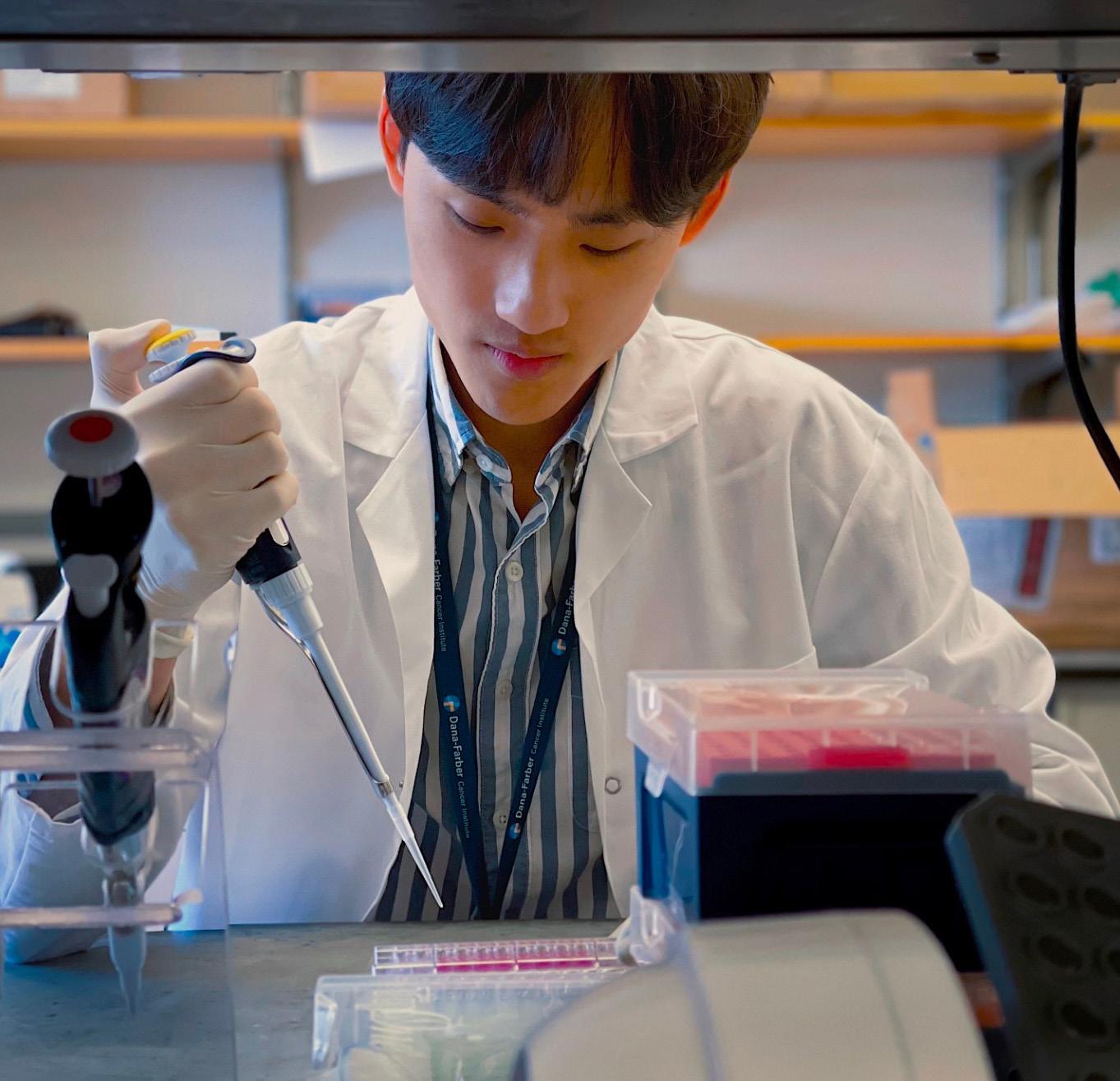
More than 6,500 different invasive species are spread across the United States alone, capable of completely outcompeting native species. Ecosystems, such as the coral reefs off the Gulf of Mexico, have become endangered, slowly dying due to lionfish. However, INVERSA Leathers has developed a unique approach to removing lionfish.
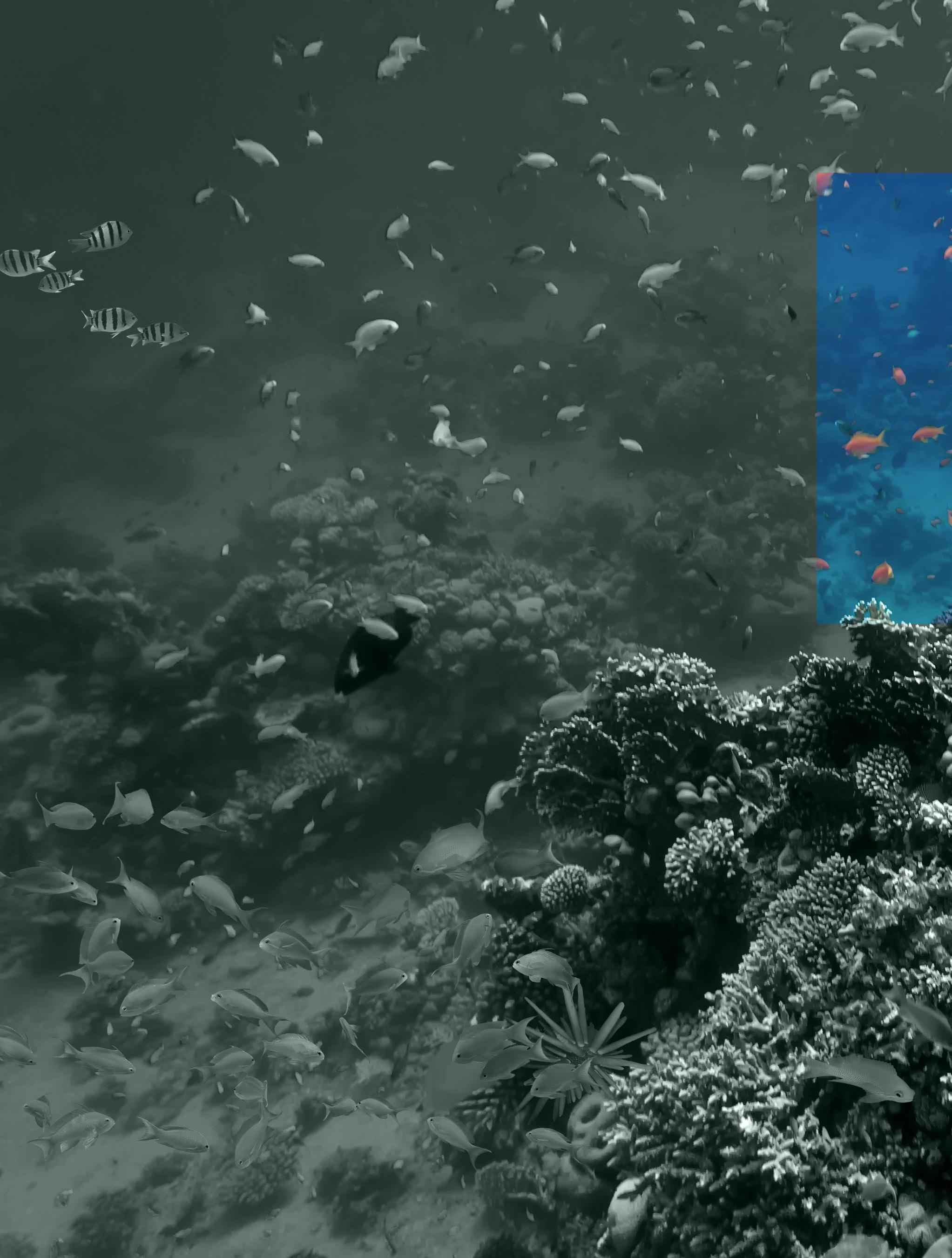
DYING

Invasive species.
Able to uproot a thriving ecosystem by systematically dominating and destroying coral reefs, lionfish have become a major invasive species plaguing the Gulf of Mexico and other oceans around the world.
Lionfish, native to the Indo-Pacific, may look beautiful, but its lack of natural predators along the East Coast has allowed the species to grow exponentially. In fact, the entire Atlantic invasion came from around 13 fish.
And since the ocean is so vast, it’s impossible to know the full number of lionfish at any time, a similar problem to many other invasive species.
As such, environmental organizations have been trying for many years to reduce the presence of lionfish, one tactic being promoting the consumption of lionfish.
While a market for lionfish meat is theoretically possible, the fact that lionfish are venomous means it would be difficult to regulate prepared and fileted meat to consumers.
However, entrepreneurs Roland Salatino ‘12 and Aarav Chavda ‘13 have developed a unique company, Inversa Leathers, to combat invasive lionfish using its most recognizable attribute: their beautiful scales.
“The main idea of invasive species control is to eliminate them, but that’s kind of unrealistic in most scenarios, and that’s not really possible with the entire Atlantic Ocean,” Salatino said. “And so what you shoot for is keeping them below this impact threshold, where their impact on native life is minimal to the point where the rest of native life can continue.”
Salatino along with his friends had firsthand seen the destructive nature of lionfish.
“Before we got into [lionfish elimination], the three of us were scuba divers, and we had seen just how much damage the lionfish was causing to coral reefs,” Salatino said. “We go and dive one year and [it would] be beautiful
and teeming with life, but when we went back two years later, sometimes it would just be completely dead with just a few things that were too big for lionfish to eat.”
While the US government has tried to push several solutions, Salatino realized a better solution.
“This feels like an area where a free market solution will be the most powerful,” Salatino said. “We know what consumers have done to bluefin tuna populations, and rhino popula tions and bison. If we can turn that power onto a species that needs to be kept in check, that’s the key to harnessing the consumer demand to protect the planet.”
Instead of nonprofit organizations, Salatino believes that harnessing natural products from lionfish and other invasive species would be a better solution.
The more that we can inspire demand for these invasive species as fashion goods, the more we’ll be able to continue to pay hunters to go out there and dive in these lands.
ROLANDSALATINO Class of ‘12
“‘What are the products that we could possibly make out of a lionfish?’ We realized very quickly that leather was going to be our winner,” Salatino said. “And so we went all in on making beautiful, gorgeous exotic leather out of lionfish skins, and realized very quickly that the fashion world really does have a big need for material that is environmentally safe.”
And so, utilizing the lionfish leather, Sala tino and Chavda were able to build Inversa Leathers and enter the esteemed 30 Under 30 Forbes list.
Since Inversa’s inception, there has been a noticeable shift in the lionfish populations.
“With invasive species, especially aquatic ones, they can roam so freely,” Salatino said

“It’s truthfully impossible to remove them all. But, we helped to set up these ceilings of management, over specific coral reefs that are designated as really important or that are particularly afflicted. And we go back, we have our hunters go back to those reefs over and
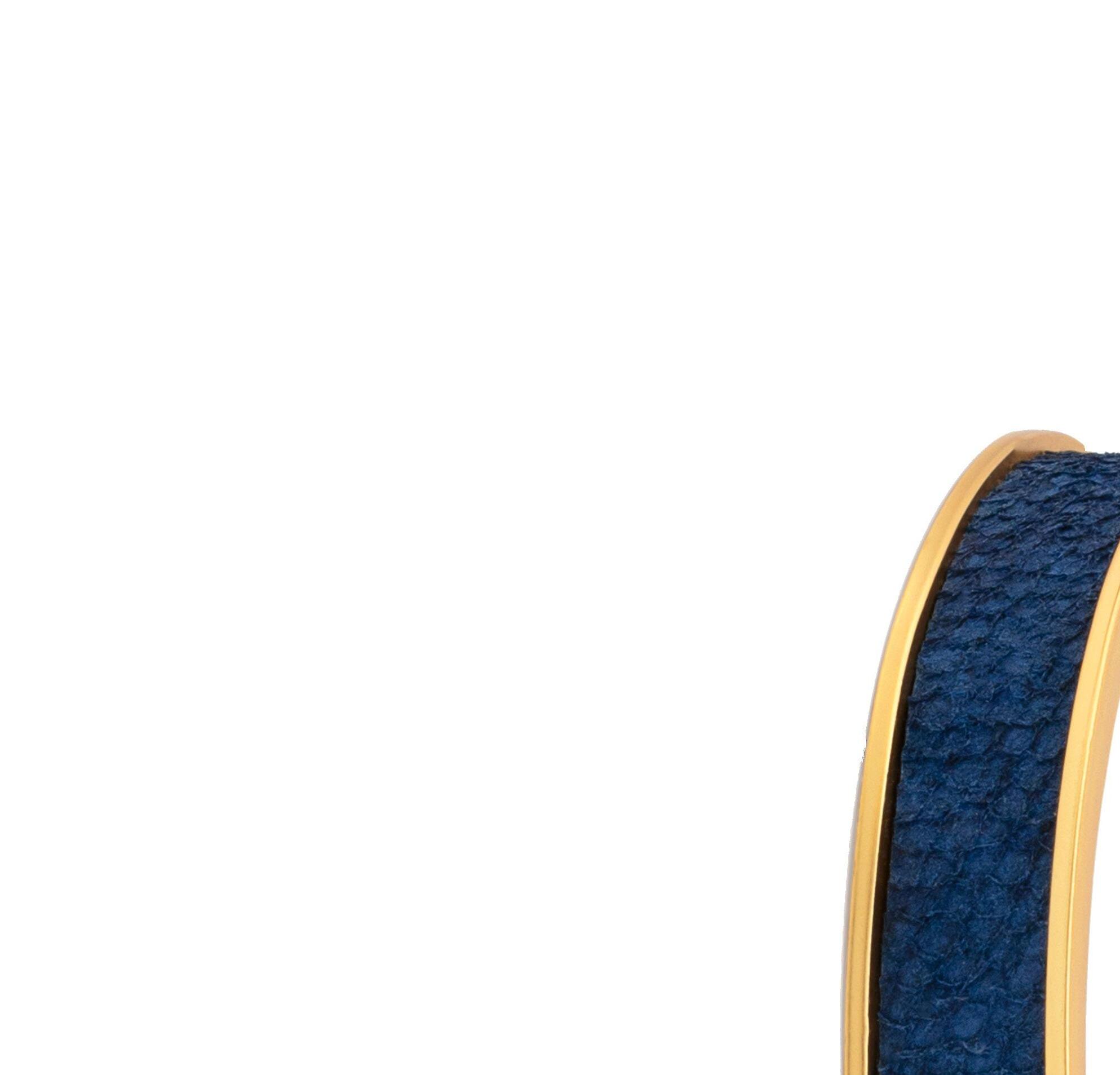
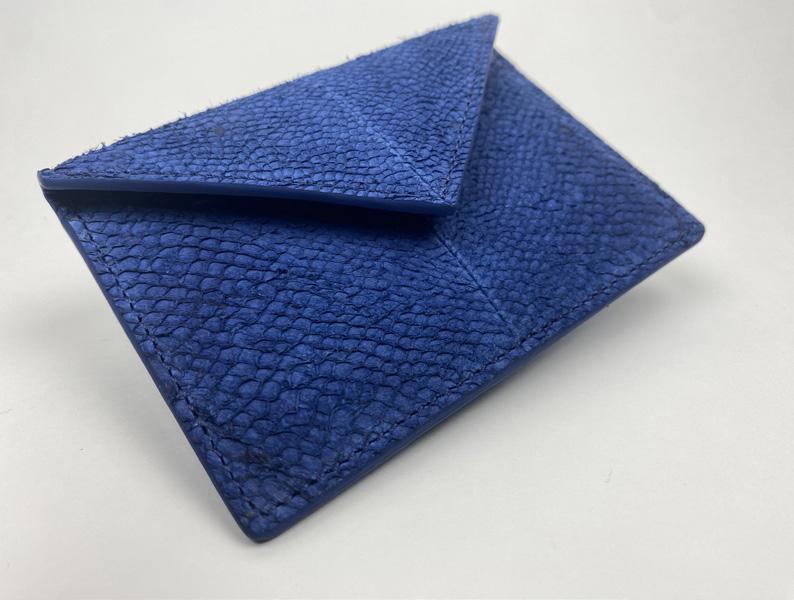
FASHION FROM FISH INVERSA Leathers has been able to convert various hides of invasive species into leather and high-quality designer products. Such products include a blue lionfish wallet (top) and an invasive python shoe collection (left).

Although the last human trip to the moon was over five decades ago, advances in technology have brought newfound interest to space exploration. Alan Stern ‘75 sees a bright future, especially in novel breakthroughs and an appeal to space commercialization.
uly 20th, 1969. Armstrong and Aldrin take the first steps on the moon as cheers erupt all over the United States. Years of scientific breakthroughs and widespread support culminate in one of humankind’s greatest achievements.
In the years since the conclusion of the Space Race, enthusiasm for space exploration has been all but extinguished, as shown by NASA’s continually decreasing budget, which has sunk to 3 billion dollars from its peak of 5 billion dollars.
In recent years, however, advancements in the space industry have attained public interest once more, with Space X’s rocket booster landings and India’s first lunar mission showing promising signs for the future.
As more ambitious projects such as Mars colonization and commercial space exploration continue to grab public interest, Esteemed Alumni Dr. Alan Stern gives his two cents on his experience and the future of the space industry.
they’re not done by one person. I think the reason we won [the New Horizons Project] is because we put together a really spectacular team. I’m only one guy on that team, admittedly, the top guy, but it’s really all about quality and building culture to carry out the project.”
As a long-standing member of the space community, Stern is excited by the reignited interest in space and the future of space projects.
“I think [new interest] is great because I was convinced, as a kid at St. Mark’s, that the exploration and settlement of space is a pivotal, important turning point. For our species, I think it offers us a much brighter future for a variety of reasons, so I’m really glad that there’s renewed public interest,” Stern said. “ I expect when we look down the road a couple of centuries as people move out into the solar system more, [society] will be more and more interested in [space].”
Story Benjamin Chen
Photo Photo NASA (Top Right), Smithsonian National Air and Space Museum (Middle Right), Virgin Galactic (Bottom Left)
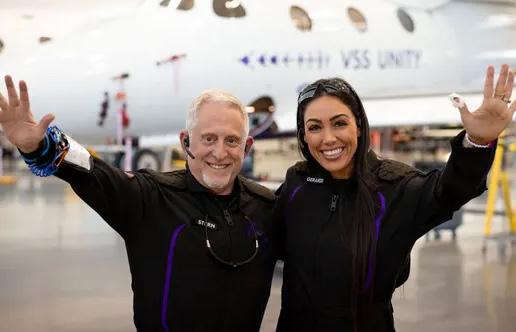
As a long-standing figure in the space exploration and space discovery communities, Dr. Alan Stern has amassed an illustrious resume over more than three decades of experience since receiving his doctorate from the University of Colorado in 1989. Maintaining his own aerospace consulting practice with valuable patrons like Blue Origin, participating in prestigious boards such as the US National Science Board, and serving two years as NASA’s chief of all space and Earth science programs make up some of Stern’s plentiful contributions to the space industry.
With this in mind, it is no surprise NASA selected Stern and his team to lead their 900 million-dollar New Horizons mission.
“I think I was chosen to lead New Horizons because I was the most qualified person to do it,” Stern begins. “It takes big teams to put on spaceflight projects;
For our species, I think [space travel] offers us a much brighter future for a variety of reasons, so I’m really glad that there’s renewed public interest.
ALAN STERN Class of ‘75 ‘
As many people await new, promising advancements, interest continues to grow with each new breakthrough. In 2020, the viewership for the launch of Space X’s first manned spacecraft, Demo-2, peaked at over 10 million concurrent viewers, becoming the most online-watched NASA event in history. Recently, in August of 2023, India’s Chandrayaan-3 landed on the moon. The livestream of the event shattered YouTube’s concurrent livestream viewer record, garnering over 8 million concurrent viewers, while also gathering 80 million views afterward. As record after record is broken along with the ever-growing interest in space, some people are still skeptical about the practicality and the technological challenges of sending a manned mission to Mars.
“I do think that developed space colonies will come to pass,” Stern said. “ I don’t think they will be large settlements, but in the next three decades, I think operations on the Moon and Mars will look a lot like the [current] operations in Antarctica. I don’t expect to see the equivalent of real settlement for me till much
further in the future.”
With the huge buzz around Mars colonization generated by Elon Musk’s ambitious plans and movies such as The Martian, many are torn between the promising possibilities and immense challenges of colonizing other extraterrestrial bodies. Some pitch ideas of terraforming Mars and making drastic changes in order to create a radiation-safe and earth-like environment, but in reality, any sort of largescale changes to Mars (e.g. terraforming) would be near impossible with currently developing technology and resources. Small settlements, just as Stern suggests, are the most feasible and sustainable way to colonize Mars.
On the other side, there are many interested in the possibility of widespread commercial space expeditions or colonization. Both working on and taking part in commercial space expeditions, Stern holds an optimistic perspective on the future of commercial space flights.
“There are commercial missions that have already been built and fit to the moon, and there will be more and more of them in the coming years,” Stern said. “I’m sure that we’ll see commercial missions to the planets, in fact, the first few are already being built now. For commercial human missions to begin? I think that’s probably at the end of the decade.”
Many have expressed interest in going to space as a tourist, and with new technological advancements, opportunities for space tourism are on the horizon. Stern, experiencing the first taste of commercial space flight, recently took part in a commercial mission in Virgin Galactic’s VSS Unity spaceplane.
“[The flight] was an amazing experience. I’ve always wanted to travel into space since I was a boy, all the time I was in St. Mark’s. It was an amazing human experience, and it was also a very successful flight from the standpoint of the research and training objectives that I undertook.”
As Virgin Galactic and other companies bring promising results for the future of commercial flights, many are hopeful for the future. However, high operation costs and travel speed create the most significant block to more widespread operations with space travel.
“Present systems are too expensive,” Stern said. “Although they’re much less expensive than they were 10 and 20 years ago, they’re still too expensive, and that’s limiting our ability to go faster. We have to do more space exploration because there are only certain products that will sell at these prices. There are only certain numbers of government exploration projects that can be undertaken with a fixed budget when the prices are high,” Stern begins. “Frankly, for Mars, we have to make it quicker because journeys of six months are just unacceptable. For any real large-scale commercial operations, we really need to get that down to ten times faster, just a matter of a week or two.”

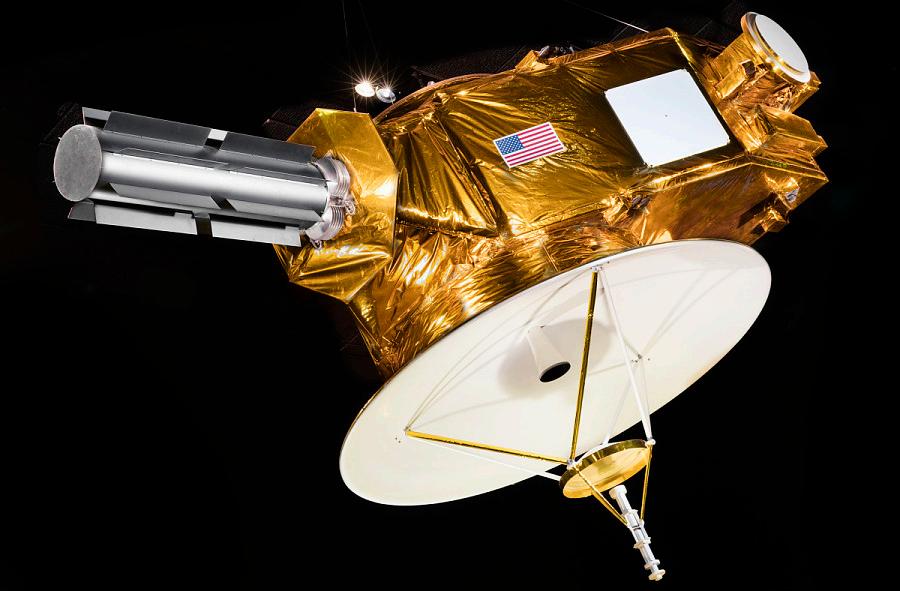
Despite these bottlenecks, Stern strongly believes that continual cost decreases and high-level technological development will come in due time.
“The commercial industry is on a pathway to driving costs down, and it’s going to take time. We’re presently flying first-generation systems, suborbital and orbital spacecraft.” Stern continued. “The earliest cars were nothing like the capability that we have today. They had to be reinvented over and over and over over the last century to get to the high level of technical sophistication that we presently have. The same will be true, just as it was for air travel, for space travel. It is just going to take a few tries as we learn to build and operate these systems more efficiently at lower costs.”
While many are holding their breath in wait for these promised advancements, the next pioneers of space travel and exploration
are quietly discovering their passion for space. For those young students, Stern has a few words of wisdom.
“Some people like engineering, some people like science, some people like the business side of things, some people like the public communication side of things, and some people like management and leadership. Within each of those categories that I just named, there are subcategories, and we need all those skill sets. My advice would be to find what really is most interesting and fun for you because when people find their passion, they almost always excel. If you can find that passion, that area, and be sure of it, then you will go a long way.”
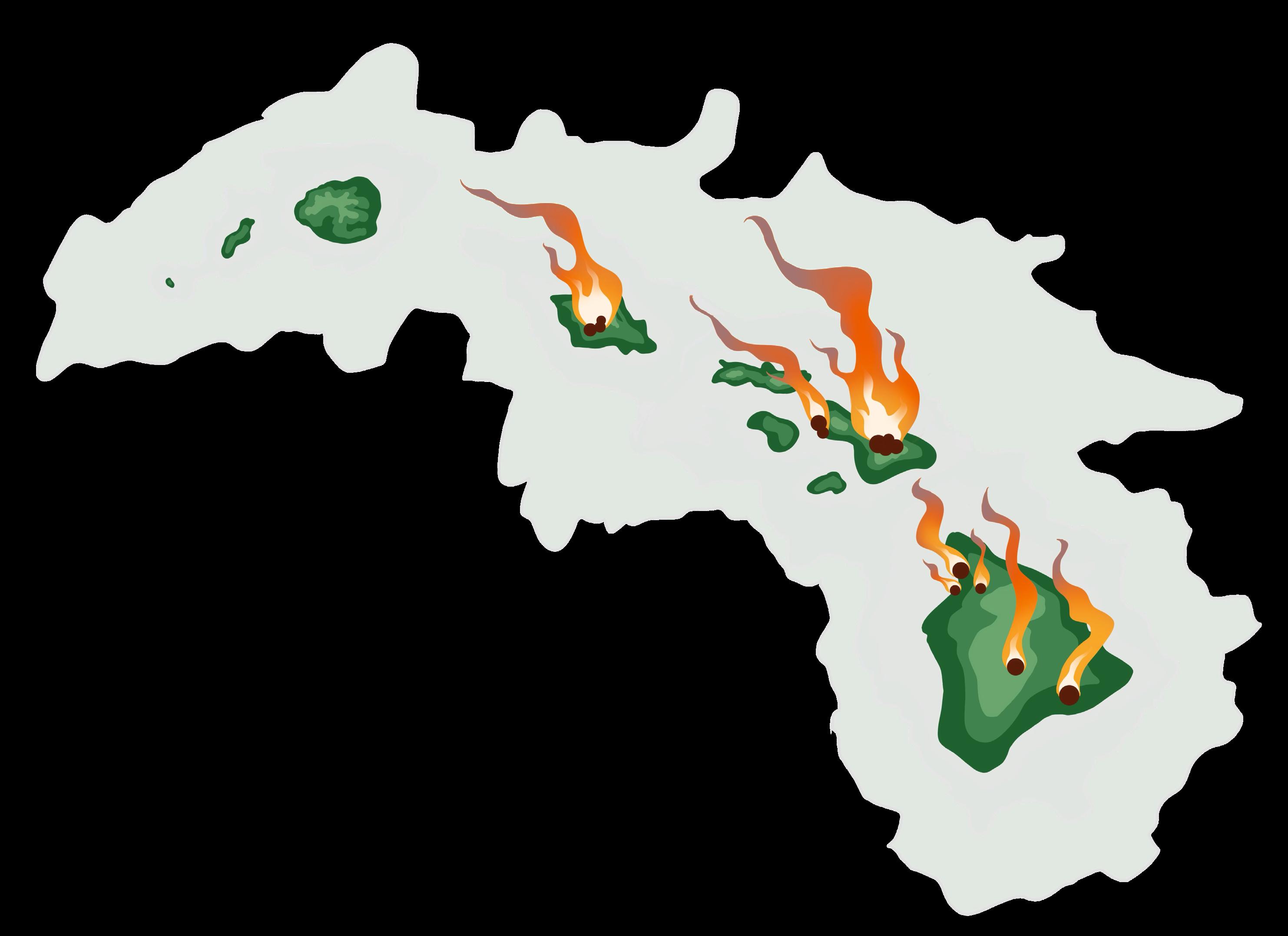
Recently, wildfires have devastated communities across the US and have cost the government billions of dollars. But the issue of wildfires is far more complex may have benefits too. Dr. Minling Pan and Dan Northcut ‘81 share their expertise on wildfires in two seperate stories.
Dr. Minling Pan stared at the TV. A montage of screams, sirens, and fires played before her eyes.
BREAKING NEWS: 5.52 BILLION DOLLARS. 2,170 ACRES OF LAND. LAHAINA ON FIRE.
Pan couldn’t believe it. All of this just happened overnight. Wildfires happen everywhere –especially with the bad combination of plants and electricity. But it doesn’t mean Pan’s heart wasn’t burning.
“It’s just difficult and sad to see such a lovely place with people that are so friendly get damaged in such a short time,” Pan said.

The police were even knocking on people’s doors warning them that there would be wind and fire, but many thought ‘We are so safe.’ But then, when the real thing happens with no warning, it’s so much more dangerous than people think.
DR. MINLING PAN Industry EconomistMinling Pan lived by herself, working with the National Marine Fisheries Service. Her husband lived in Hawaii but on a different island, and the two were separated by 20 miles of Pacific Ocean. A couple months before the fires, the people were even warned of the incoming dry season. Thankfully, she and her husband weren’t affected by the wildfires, but the proximity alone was enough to cause distress.
“The police were even knocking on people’s doors warning them that there would be wind and fire, but many thought ‘We are so safe; we’ve lived here for so many years and never had a problem,’” Pan said. “But then when the real thing happens with no warning, it’s so much more dangerous than people think.”
During this sensitive period, anything and everything made her stand on end. As the Maui wildfires raged on, Pan almost witnessed the genesis of a large-scale wildfire just two houses down from hers.
“The wind blew down an electrical pole, which fell down, hit a car, started as a small fire –just like the Lahaina wildfire,” Pan said. “We just didn’t have electricity for a day, but I watched how nature made (disasters) happen like that.”
Pan had friends that were affected, and she knew she had to help. Others, feeling the same way, joined together to help their community in an act of love. With her small church, they raised about 20,000 dollars in just a week and a half. She knows twenty thousand doesn’t compare to five billion dollars – that part doesn’t matter. Her contribution isn’t for the dramatic purpose of saving lives but to instill small bits of love in times
“With disasters like this, I think it’s hard to
foresee and prevent,” Pan said. “The only way to prepare is to live more, go through your daily life, and maybe rely on more than just one thing.”
These fires may have run rampant and destroyed and changed countless lives, but for Pan, there is always a takeaway. A learned lesson.
“In a way, we treasure life and love more because life is short and uncertain,” Pan said. “These fires impacted us, made us more aware that our life is precious. And family is more precious.”
He’s dealt with fires before – small, grass fires that sprung up on his farm out in East Texas.
But those are nothing compared to the millions of trees and thousands of acres burning in a large-scale wildfire.
As a teenager, Director of Environmental Studies Dan Northcut used to see prairie fires all the time, stamping them out by dragging a large carpet, hooked to the back of a pickup truck, around. Statistically, entire prairie ecosystems burn every three to five years. In less than a decade, every section of a prairie catches fire, forming a black sea of dead crops that start from scratch to begin the cycle again.
“When there are plants, you’re going to have a wildfire sooner or later,” Northcut said.
Here, in Dallas, the fire department is very capable and able to handle building fires and other medium-scale fires quite easily. With firefighters putting away fires before they get out of control, modern society has become oblivious to these wildfires that appear so often.
But it took centuries of experience and hundreds of fires to understand how to effectively fight fires.
“For 100 years, we’ve been trying to put fires out as soon as they happen,” Northcut said. “But,
from the Yellowstone fire in 1988, we learned that we should have been letting them go and let them burn naturally.”
Dowsing forests in water only has short-term benefits. After putting out a fire, thatch and old grasses become even more flammable, with fires that burn hotter.
“(A forest’s) fuel load can build up, so if another fire gets started, then it’s got plenty to burn,” Northcut said. “We can’t put the fire out. It’s too big. And by the time we learn about it, it’s too late.”
From a human standpoint, nothing good comes from fires. Loss of life, property, and livestock are prominent consequences coming from wildfires and grass fires. Commonly associated with destruction, small fires easily run rampant and get out of a civilian’s control. When looking at the aftermath of a wildfire, many can’t fathom any life flourishing behind the scenes.
“Humans don’t live in a fire ecosystem, so we freak out for good reason,” Northcut said. “Fire is scary as hell, that’s for sure.”
However, in certain ecosystems, fire is used to effectively get an ecosystem back to a healthy state. Northcut has done it to his own property, intentionally setting part of his land on fire in a process called “prescribed burning.” Though it may look dangerous and the land seems dead, the burning is similar to a reset for the land – a clean slate. The ecosystem is constantly adapting, no matter the natural disaster.
“If you burn an area, for certain plants, their seeds will start germinating after the fire,” Northcut said. “It looks bad for a month or two, you know, because everything’s black, but when spring comes, you’d never know if it happened. there.”
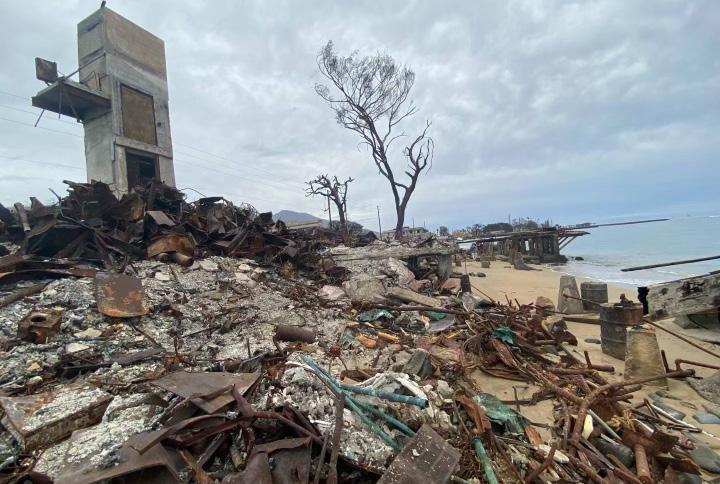
THEDANGERSINTHEDANGERSINTHEDAN
GERSINTHEDANGERSINTHEDANGERSIN
THEDANGERSINTHEDANGERSINTHEDAN
GERSINTHEDANGERSINTHEDANGERSIN
THEDANGERSINTHEDANGERSINTHEDAN
GERSINTHEDANGERSINTHEDANGERSIN
THEDANGERSINTHEDANGERSINTHEDAN
GERSINTHEDANGERSINTHEDANGERSIN
THEDANGERSINTHEDANGERSINTHEDAN
GERSINTHEDANGERSINTHEDANGERSIN
DANGERSINTHEDANGERSINTHEDANGERSINTHEDANGERSINTHEDANGERSIN-
THEDANGERSINTHEDANGERSINTHEDANGERSINTHEDANGERSINTHEDANGERSIN-
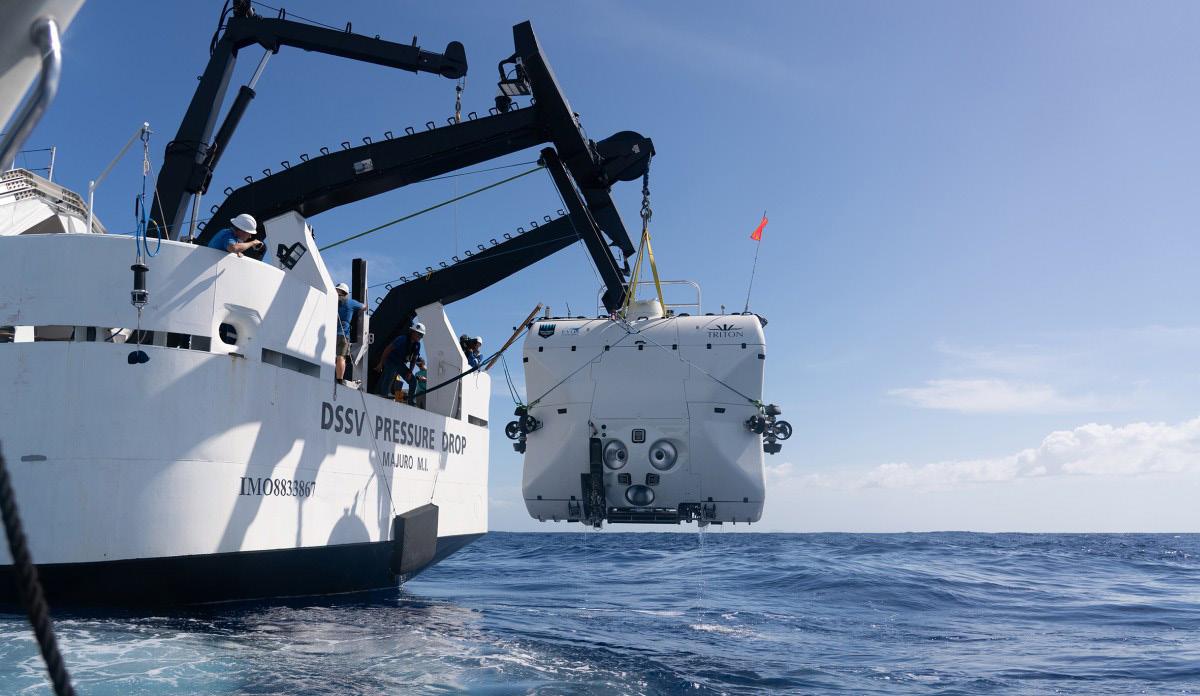
Amid the concerns regarding deep sea exploration due to the Oceangate disaster, Victor Vescovo ‘84 still holds high hopes for the future of the industry.
THEDANGERSINTHEDANGERSINTHEDANGERSINTHEDANGERSINTHEDANGERSIN-
Thump. In mid-July, 2023, Oceangate’s Titan submersible imploded on a “routine” mission to over 12,000 feet below sea level, killing Oceangate CEO Stockton Rush and four other high-profile passengers. The submersible’s cost-cutting and questionable design choices had raised concerns and criticism from many in the industry, who recognized the glaring flaws and the inevitable disaster. But now, it was too late.
Trench) and complete the Explorer’s Grand Slam, reaching all seven summits in addition to the north and south poles.
Even with exploration’s inherent risks, groundbreaking technology has allowed Vecovo and his colleagues to work safer and go deeper. New submersibles like Vescovo’s Lim-
opment over the last few years to have one of the safest records of any major technological vehicle,” Vescovo said. “For 50 years, there has been no death or even serious injury in the new submersibles.”
THEDANGERSINTHEDANGERSINTHEDANGERSINTHEDANGERSINTHEDANGERSIN-
In recent years, adventurers like Victor Vescovo ‘84 have pushed the boundaries of sea exploration, breathing new life into a field many have brushed off.
Vescovo, having earned degrees from Stanford University, MIT, and Harvard Business School, has left his distinct mark on the exploration industry. He became the first person to reach all five “deeps” (the Mariana Trench, the Molloy Deep, the Puerto Rico Trench, the South Sandwich Trench, and the Diamantina
iting Factor, which brought him safely to the bottom of the Mariana Trench during his unprecedented Five Deeps Expedition, bring high hopes for future sea expeditions.
“We’ve conducted our research and devel-
Stockton Rush, the Oceangate CEO who was killed in the implosion, saw himself as a visionary who would push the limits of commercial exploration with his submersibles further than Vescovo and his colleagues had with their “cautious” approach. Despite strong warnings and pleas from his colleagues, he would push on with his life-threatening commercial ventures, straying away from the accepted levels of precautions.
THEDANGERSINTHEDANGERSINTHEDANGERSINTHEDANGERSINTHEDANGERSIN-
Oceangate’s Titan submersible, pandering to the curiosity of wealthy individuals, brought passengers down to visit the Titanic at the steep price of $250,000 per person. These commercial ambitions for deep-sea travel pushed Stockton Rush away from the private and research-oriented approach of most others in the industry.
“The only thing [Stockton Rush and I] had in common was we were both trying to push deep ocean technology forward, but we did it in very different ways. I stayed very much within the historical norms of safety operation,” Vescovo said. “From the very beginning, Stockton Rush’s objective was to have a commercially viable operation that used a submarine that could go to the Titanic. Those are two different starting points [between me and him,] and because of that, he had to make compromises so that it was economical, eventually causing the vessel to have safety compromises.”
Specifically, Vescovo mentions that the engineering of Stockton Rush’s Titan Submersible was fundamentally flawed, disregarding basic geometric principles and brushing over the importance of material properties.
“In conventional ocean submersible design, you use a sphere to hold people, because a sphere under intense pressure gets stronger by evenly distributing its weight across its surface area,” Vescovo said. “In order to have five people in his craft, Stockton Rush had no choice but not to use a sphere. Otherwise, the submersible would have been far too large to put on any vessel that could be economically viable to transport it to and from the Titanic. Not only that, in the conventional submersible industry, we try to use what are called isotropic materials, materials that remain the same under force from any direction, but [Stockton Rush] used dissimilar materials, so it was only a matter of time before something happened.”
Even with these glaring flaws, a few still boarded the submersible. Some, deceived by the Titan submersible’s multiple previous successful missions, took a gamble with their lives and tragically passed away on the submersible. A few of these were Vescovo’s friends.
“My friend [Paul-Henri] Nargeolet was a very accomplished deep submersible operator. He had an intense, almost emotional attachment to the Titanic, and he had been down on maybe the most dives [to the Titanic] of anyone in history and recovered many artifacts. He was also my technical advisor during the Five Deeps Expedition. I had also worked very closely with Hammish Harding, and he was a passenger on my trip to the bottom of the Challenger Deep,” Vescovo said. “Given their experience, I actually think they believed they could help potentially prevent a disaster by being on the scene.”
You either come back, or you don’t. One cannot take unnecessary risks with one’s life or others because the ocean is incredibly unforgiving.
VICTORVESCOVO Class of ‘84
With this tragedy comes the question, How was Stockton Rush allowed to commercially sell his services with such a dangerous vessel?
Without an international agreement about safety certification for these submersibles, there is not much stopping these unsafe practices. This left Oceangate free to operate without any certifications or licenses, despite there being a commonly accepted industry standard for safety for these types of submersibles.
“There is no international law or international police force to enforce such a law [on vessels] in the deep ocean, which is where the Titanic is. It is, however, possible that regulations can be put in place by individual countries that would prohibit operations for unsafe vessels that are not commercially certified, but that would simply mean that [Oceangate] would move their operations to a country that
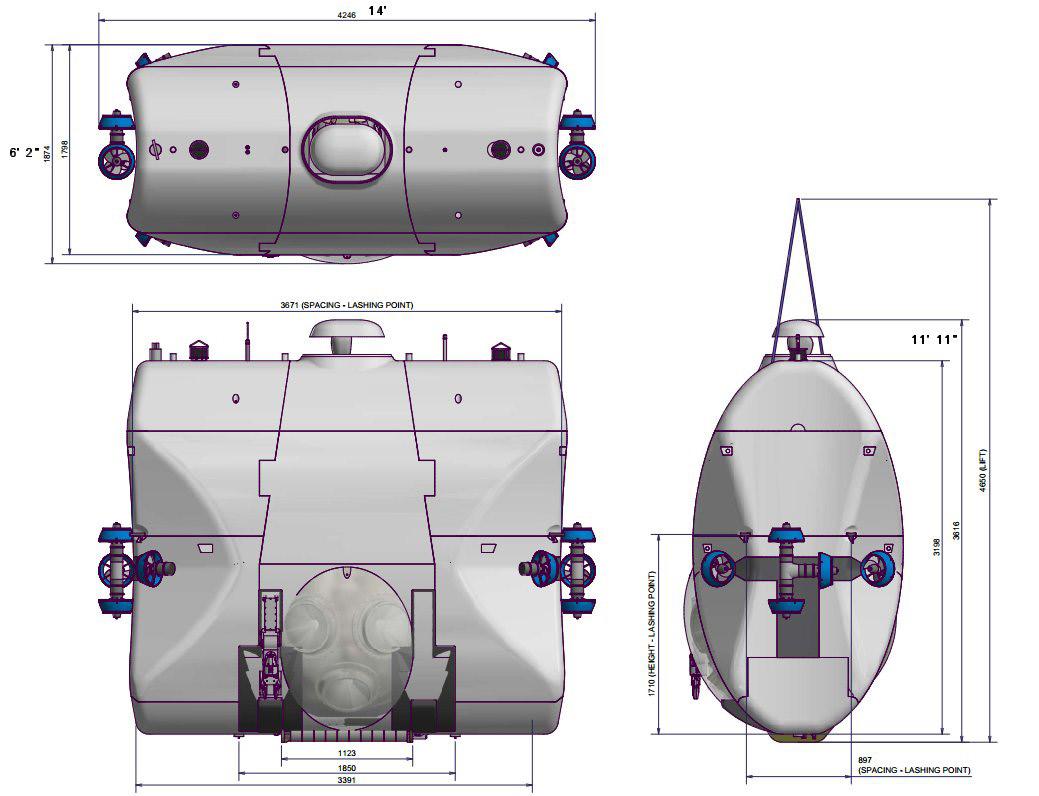
does not adhere to those rules.”
On the other hand, with the recent successes of private deep-sea expeditions bringing promising signs for future missions, the commercialization of deep-sea exploration has also come into question. Is it too early to have full-on commercial missions? Should the Oceangate tragedy serve as a cautionary tale for other commercial deep-sea exploration companies? Vescovo provides his own perspective on commercial deep-sea exploration.
“Shallow water submersible operations, at or above 2000 meters, is already widely done, and there are already well-established and safe operators with perfect safety records. The problem when going below 2000 meters is the technical issues become dramatically more difficult and risky,” Vescovo said. “Therefore, I don’t believe it is commercially viable to build submersibles that can take tourists down to the Titanic or even deeper without significant advancements in materials technology or other aspects of submersible operations.”
Without throwing safety to the wayside, like Stockton Rush, there is no way to commercialize deep-sea travel.
“It’s just too expensive to build a submarine that can reliably and safely repeatedly go to those gaps that can hold more than one or two passengers right now,” Vescovo said. “You either come back, or you don’t. Therefore, you have to have an extremely high level of safety. One cannot take unnecessary risks with one’s life or others because the ocean is incredibly unforgiving.”

SIMULATIONS Computer-generated model mockups of the Limiting Factor.

STABLE SPHERES The Limiting Factor’s sphere inner-frame undergoing inspection.

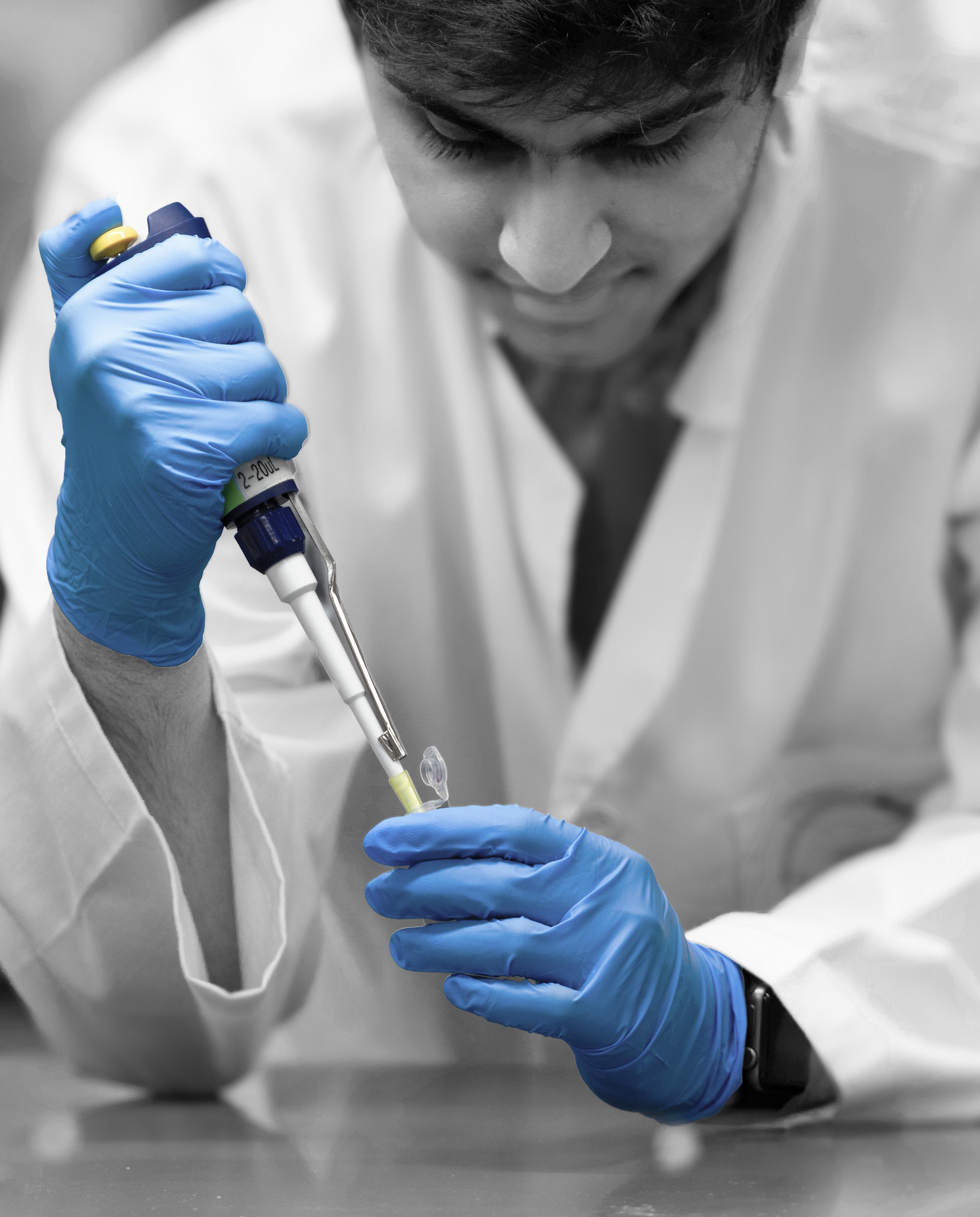
Data analysis is a complex, interdisciplinary, and crucial topic foundational to modern scientific research. Scientists around the world are now analyzing vast amounts of data to influence everything from policy to clinical research.
Beyond busy hospitals and bustling clinics lies the field of Health Services and Outcomes Research (HSOR).
“It’s a very broad term. Most of the time, I work with real-world data, which is basically any data that is collected, related to, or affecting health, so our field is research regarding anything related to health,” Dr. Sambamoorthi explained.
Beginning in downtown Pittsburgh, where walls were painted with toxic metals, Dr. Sambamoorthi worked on a project that studied the amount of lead intake that children had, driving her to explore the field of HSOR: “I became very passionate about this project, I never thought I would be in the health field. I thought I was always going to be an economist and help with policy decisions with the Indian government.”
Currently, in addition to her research, Dr. Sambamoorthi teaches, and she has administrative duties in the National Institutes of Health and teaches her field of HSOR to students.
HSOR has been around for many years, dating back to the 1960’s, when researchers initially developed a field to further study the cost, effectiveness, and general quality of healthcare.
“Moreover, Health Services and Outcomes Research works on how to analyze data, how to interpret data, and how to report the data,” Dr. Sambamoorthi said. “Due to their investment in this project, we now have electronic records in around 96% of the hospitals and 80% of the physician offices. Electronic health records are a critical source of information for physicians.”
Due to the vast amount of data, HSOR is an interdisciplinary field, and researchers must draw from disciplines such as statistics, economics, health policy, and medicine to successfully analyze information.
“There is also a financial aspect of it in this country, as the annual cost of healthcare is going to approach almost $7 trillion by 2030. It’s like a major financial industry as well, even though it’s regarded as health services. We also do research on the economic burden, and [HSOR] also branches into artificial intelligence and machine learning, as both have the potential to revolutionize healthcare.”
While A.I. has the ability to help physi-
cians diagnose illnesses, artificial intelligence and machine learning may have excessive racial, ethnic, and gender bias.
“The same treatment may not work for people from different populations,” Dr. Sambamoorthi said. “When they deploy the algorithm, other groups suffer because it didn’t do the correct job.”
The
So, you try to make sure the data is clean, that whatever comes out of the data makes common sense. Researchers must decide on the study design to effectively gauge their questions and tests. Trends and perspectives are often an important factor in study design.
best way for everybody to move forward is team science. Through team science, everybody comes with their own special knowledge, and then we unite and combine our efforts to solve a problem.
DR. USHA SAMBAMOORTHI Health Economist ‘
Research in the HSOR field is very methodical, and each part is crucial to any paper’s success and publication. The main purpose of research is to develop and uncover new knowledge that will directly inform the medical community.
“Due to the vast amount of regulations and policies that appear in the field of medicine, there are certain policies that work and others that don’t. Therefore, researchers look for these kinds of questions to help improve policies and the laws that govern healthcare and medicine. It is important to do a deep dive into a question and figure out issues or problems…It can also become a form of comparative effectiveness.”
HSOR doesn’t always reside in clinical issues. Research on policies is also essential, as it can find flaws in policy that may negatively impact people or certain populations. After defining the research question, there must be analysis which may require producing data.
“Sometimes there is no available data at all, so then researchers must decide whether they have the capacity to go and collect the data. Collecting the data often requires a lot of money because it is important that the data is able to represent the nation or the population in the study.”
Due to the nature of the HSOR field, where trends and large populations are analyzed frequently, researchers must assess the time and effort into collecting data along with the amount of funding and applying for grants.
“However, if there are existing data sources, researchers must decide and analyze the strengths and weaknesses of the data.”
Dr. Sambamoorthi stated that “when deciding on the type of study,” she asks questions such as “should you follow people over a period of time? Do you want a snapshot today? Or do you go back to find the problem?” Retrospective tests, and perspective surveys
And then moving forward, we call it perspective.” Dr Sambamoorthi continues.
Interpretation comes after the analysis, where researchers must attempt to find out or conclude something from the data.
“There are unexpected results that may not make sense at first. Therefore, unexpected outcomes and results drive the need for interpretation as correlations and trends.” Dr. Sambamoorthi explained.
The importance of interpretation is that it helps researchers and expand on the topics. Interpretation comes in many forms and researchers attempt to derive solutions and broaden their understanding.
Dr. Sambamoorthi emphasized that finding funding for projects is also a major challenge as research involves multiple people.
“One project may require hiring students, programmers, and other participants. Funding is also extremely difficult as there are limited resources with many people applying. In addition, in the United States we use a peer-review process, and every article that we send is evaluated by other physicians or peers. Sometimes when a paper comes back rejected it might cause doubt in personal abilities; however, through constant revision and improvement the time and effort towards research will eventually pay off,” Dr. Sambamoorthi shared.
Dr. Sambamoorthi and other researchers in HSOR learn and connect with multiple fields: “I always say it’s general training. In research on diabetes, I’m not always doing research in emergency room visits… And so, in our field, the non clinical factors are also important. [For example], how education affects income and employment affects health. I learn something new every day.”
Editors-in-Chief
Alex Pan ‘24, Joseph Sun ‘25
Managing Editor
Benjamin Chen ‘25
Section Editors
Sohum Sukhatankar ‘24, Benjamin Standefer ‘26, Kayden Zhong ‘26
Head Photographer
Winston Lin ‘26
Creative Director Carson Bosita ‘25
Copy Editors
Arnav Lahoti ‘24, Rishi Rai ‘24, Everett Jin ‘26
Staff
Vivek Patel ’24, Amar Kakkar ‘25, Daniel Sun ‘25, Neil Yepuri ‘25, Justin Kim ‘26, Kevin Hong ‘26, Ronit Kongara ‘26, William Kozoman ‘26, Aryaman Lahoti ‘26, Matthew Liu ‘26, Doan Nguyen ‘26, Richard Wang ‘26, Shiv Bhandari ‘27, Dylan Bosita ‘27, Christopher Huang ‘27
Adviser
Dr. Dan Lipin
The Scientific Marksman is an out-of-school extracurricular activity that works independently from the St. Mark’s School of Texas journalism program. Throughout the first half of the year, staff members pitch story concepts, hold interviews, and write articles; the majority of the design process occurs in the latter half. This publication is submitted annually for evaluation to the Columbia Scholastic Press Association (CSPA) and the National Scholastic Press Association (NSPA).
The Scientific Marksman is printed by Digital 3 Printing. The cover is 100# Polar Bear Velvet Cover printed 4/4 in four color process inks. Text is 100# Polar Bear Velvet Tex printed 4/4 in four color process inks. Binding is PUR glue perfect binding. The Staff uses Adobe InDesign, Illustrator, and Photoshop 2023 on 27-inch Retina 5K Display iMacs and a 15-inch 2020 Macbook Pro to design the spreads. Typefaces include Roc Grotesk for headlines; Interstate for subheadings, pull quotes and bylines (multiple weights and styles); and Baskerville URW for body text and folios.
Our utmost gratitude goes to Dr. Dan Lipin, our incredible adviser, the St. Mark’s Security team, and Jim Barragan and Joni Schiell with J Culley Imaging.